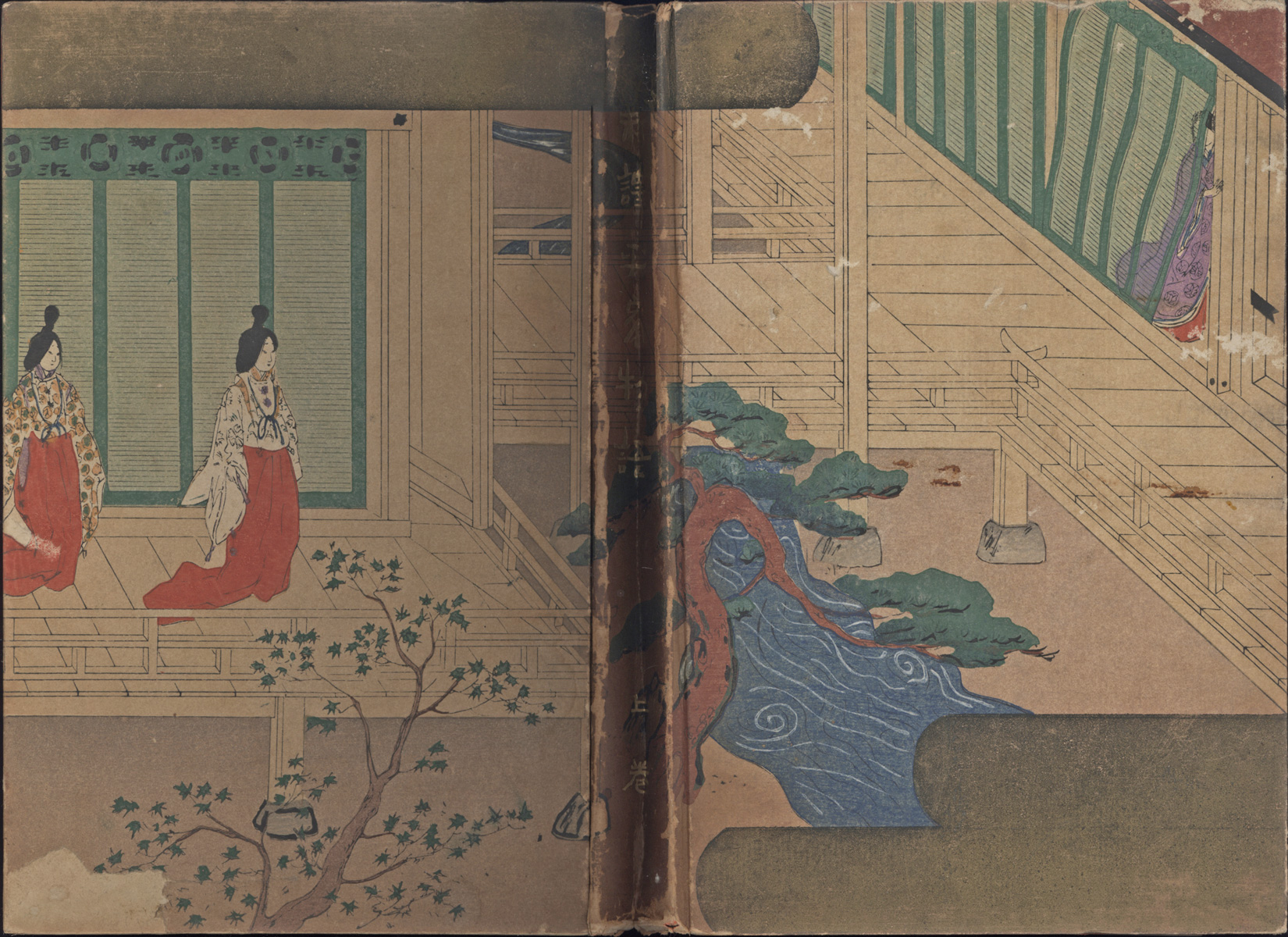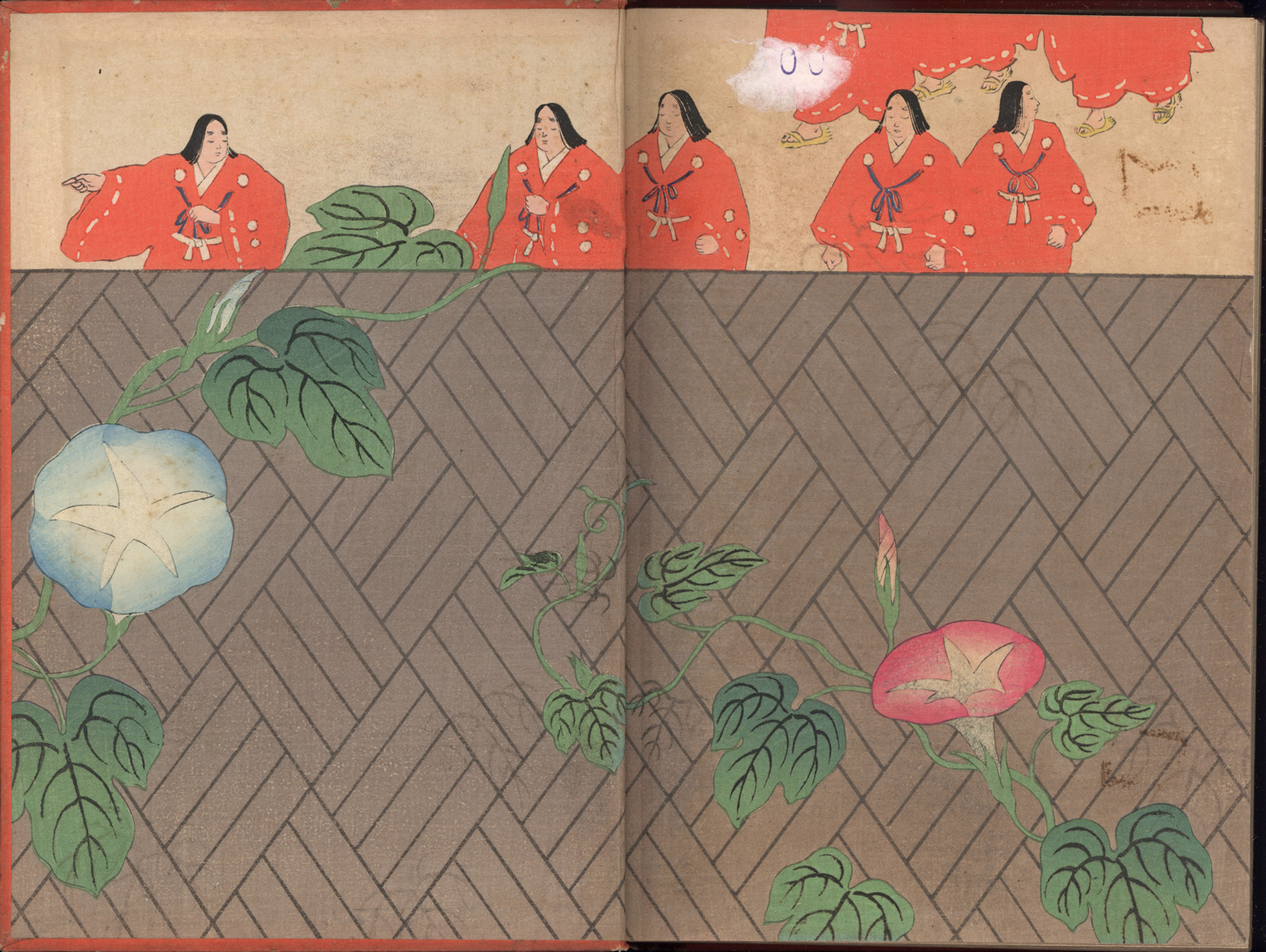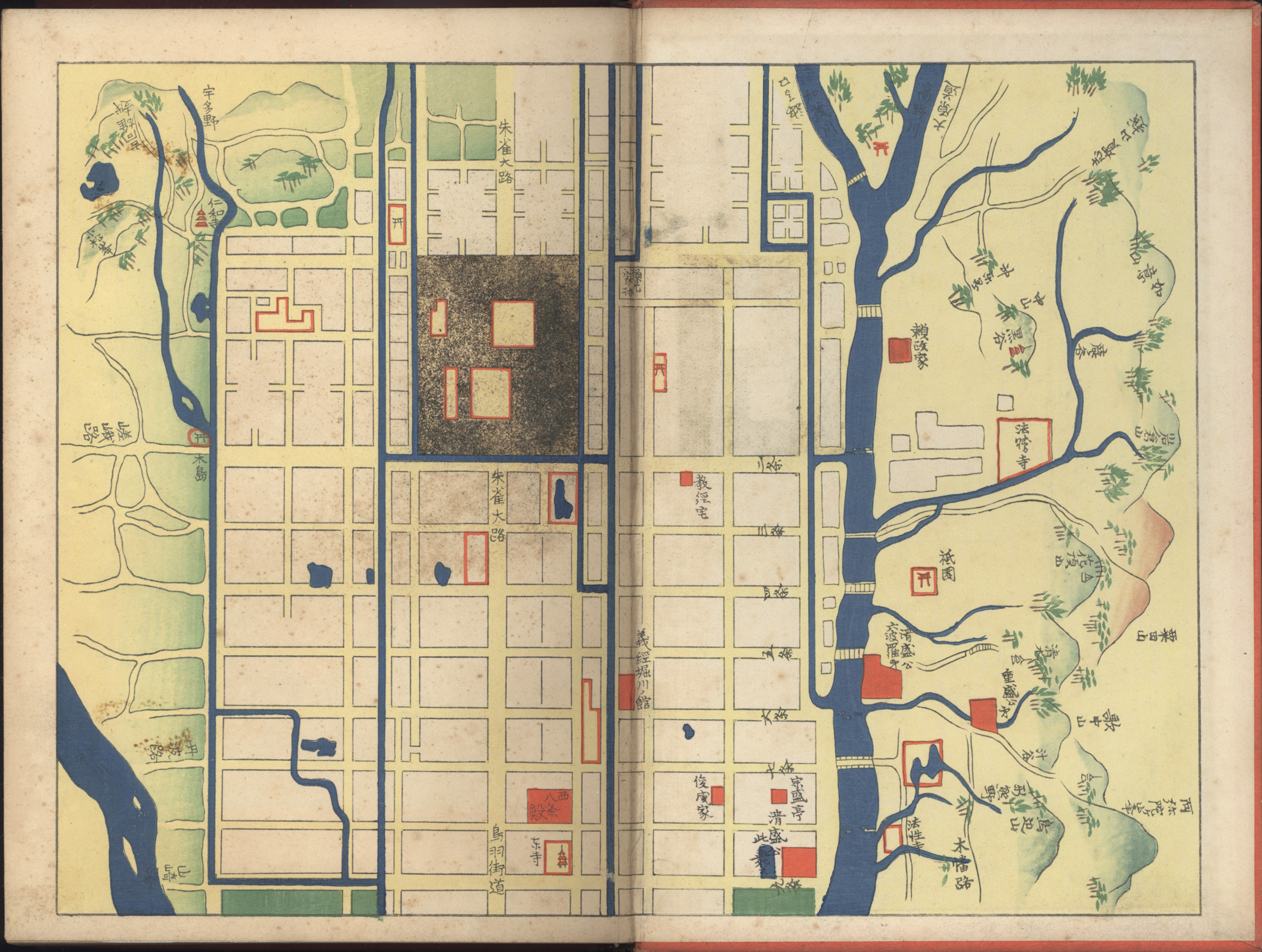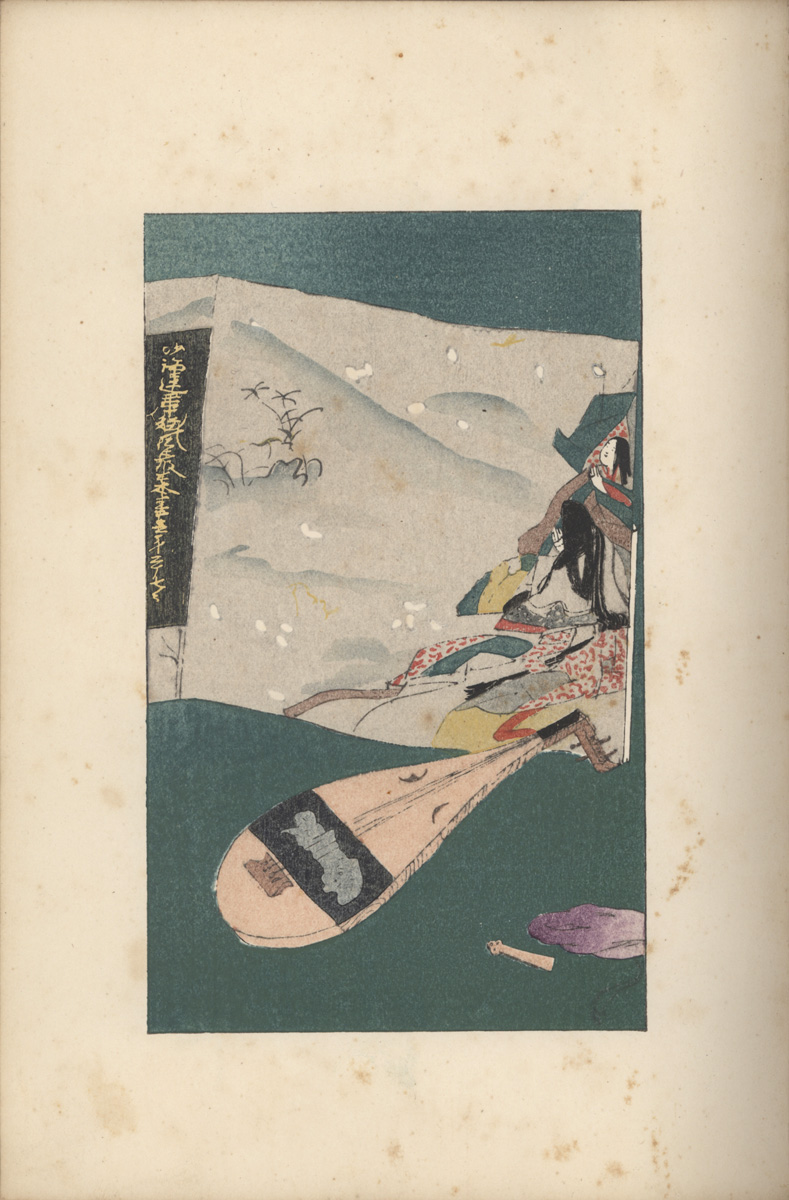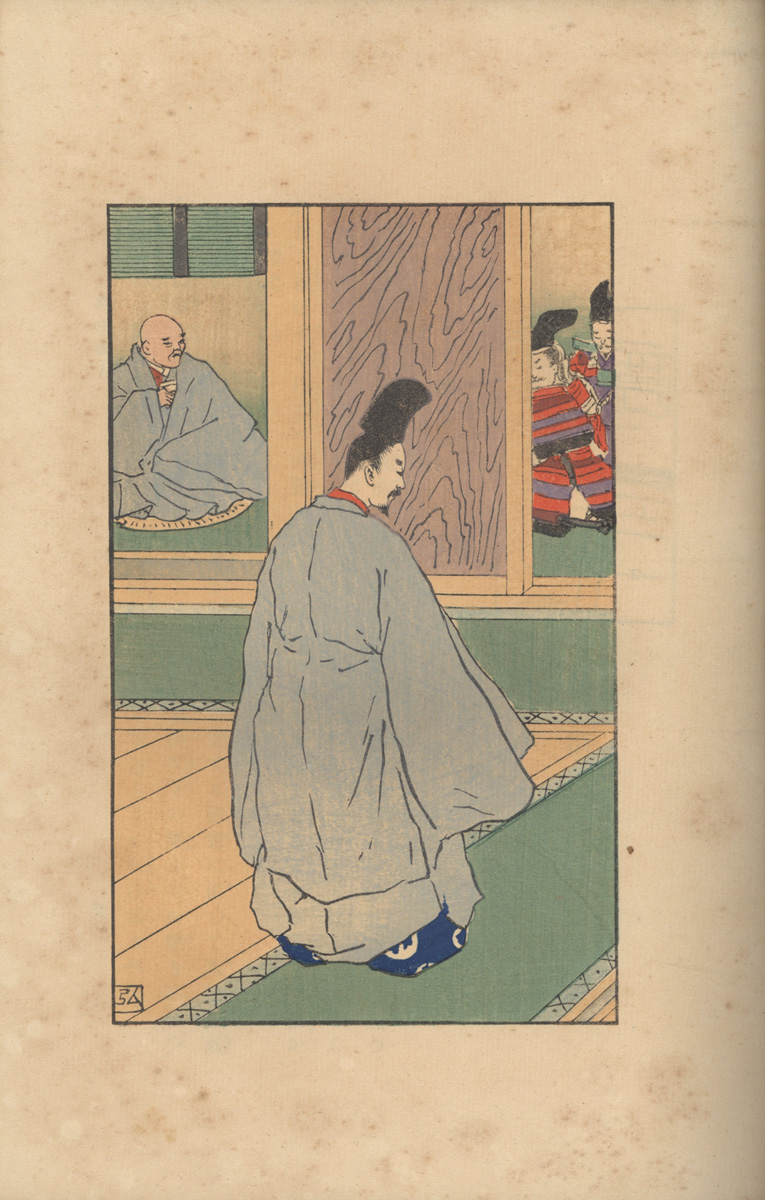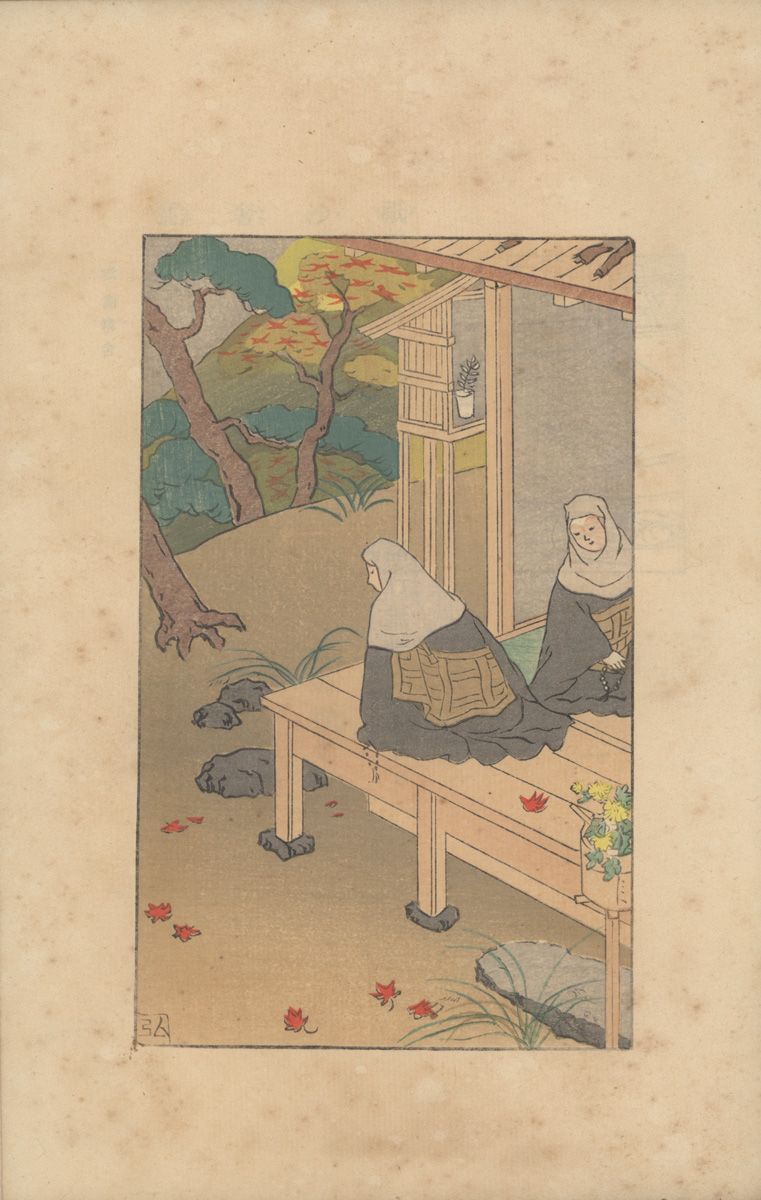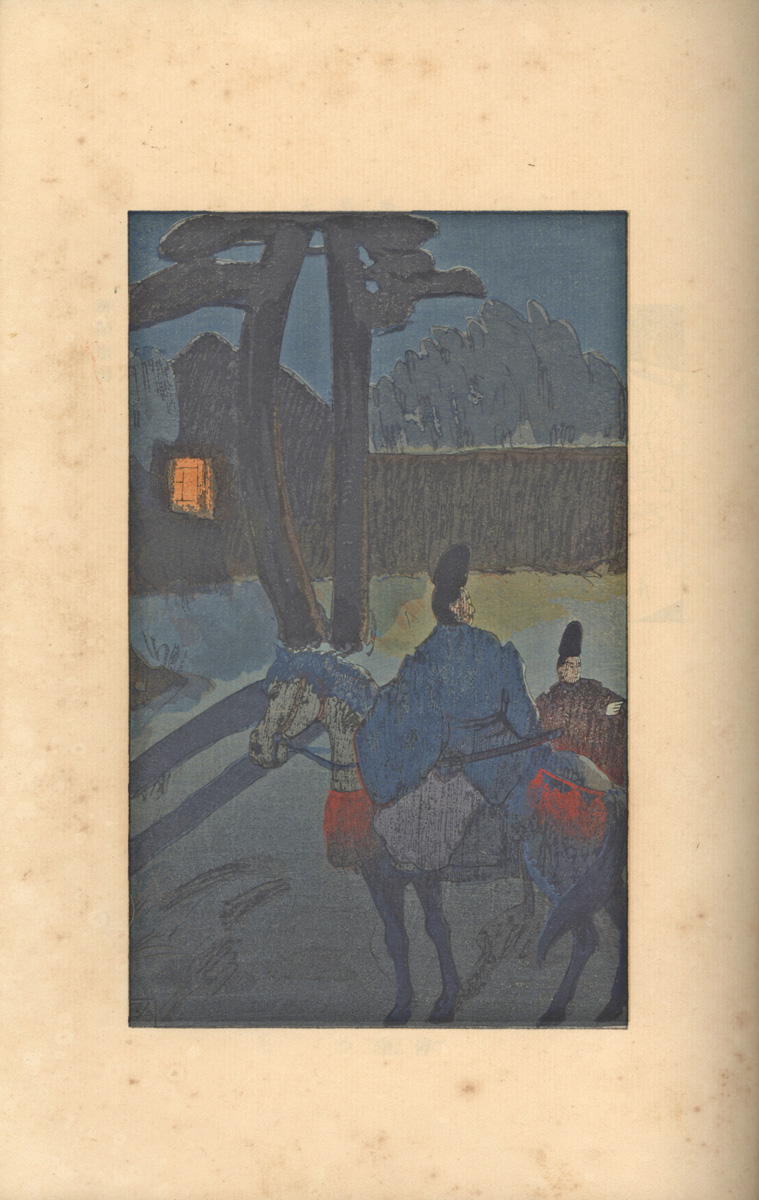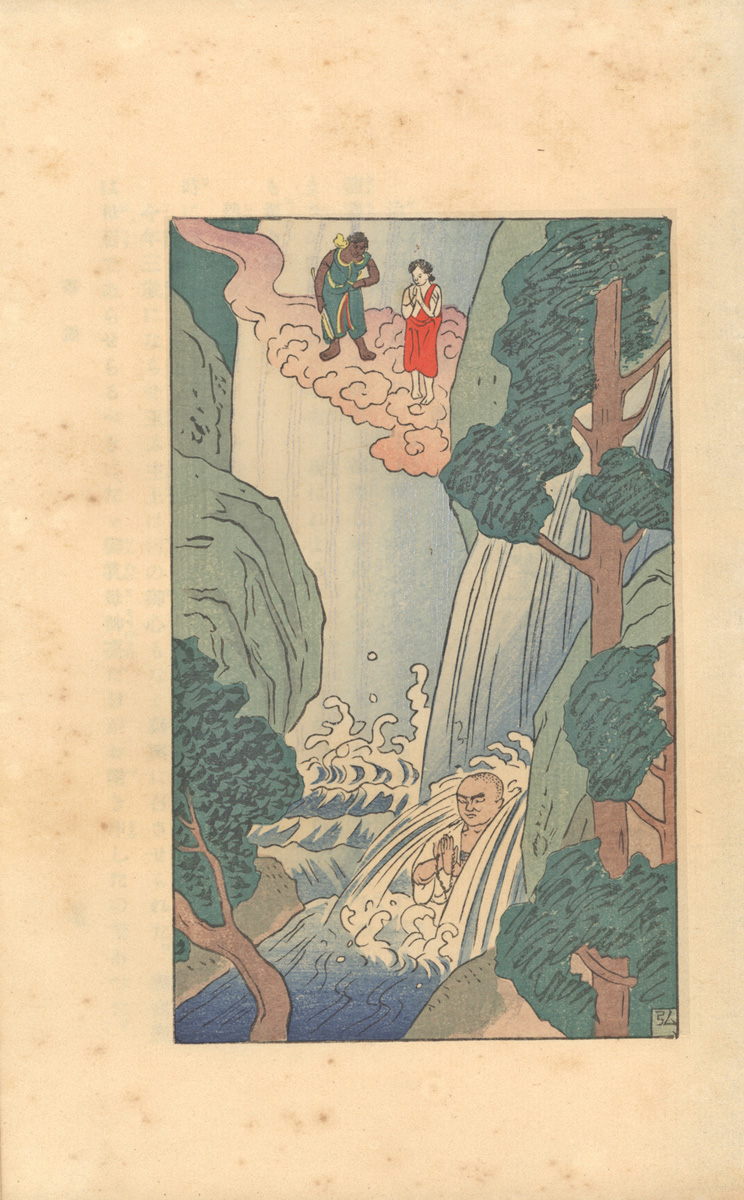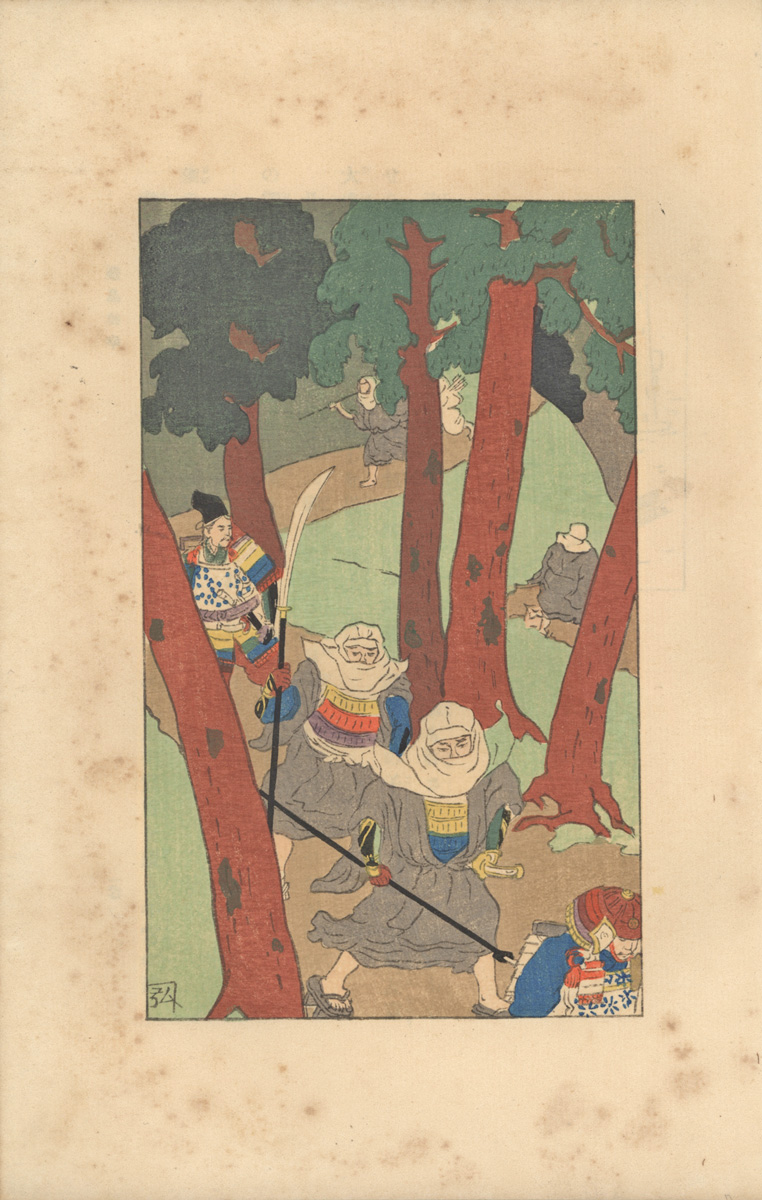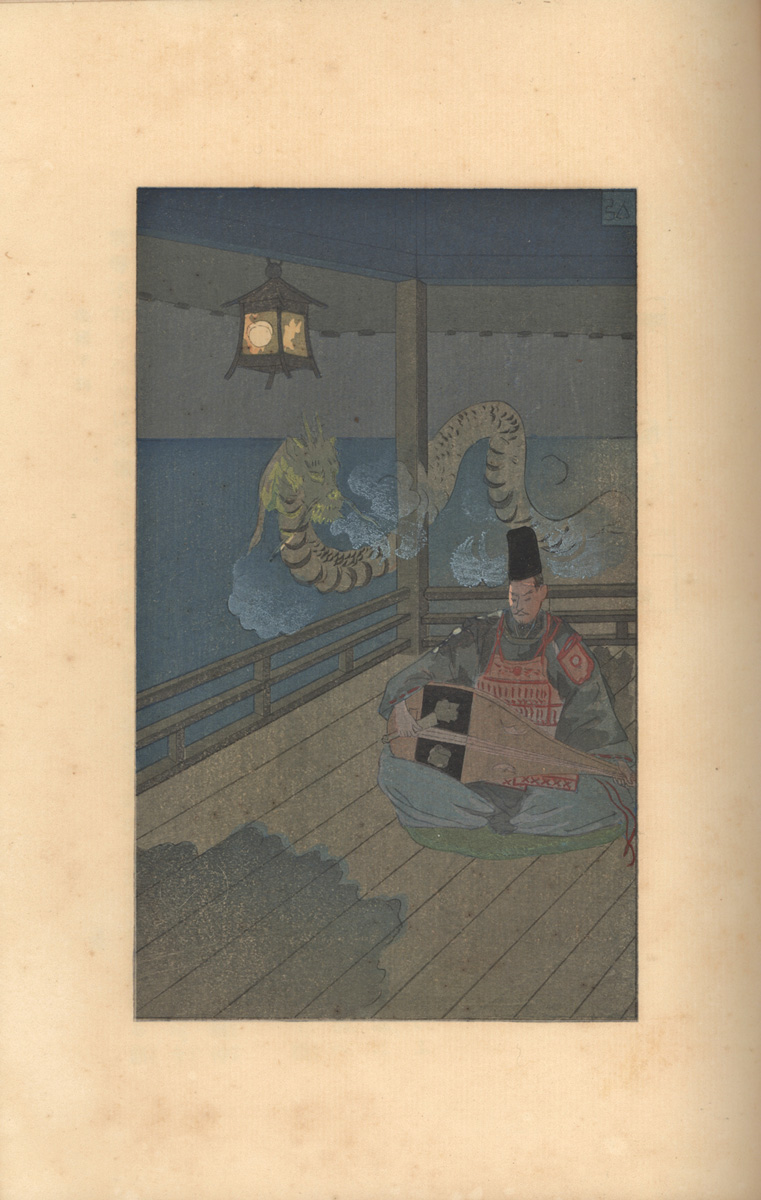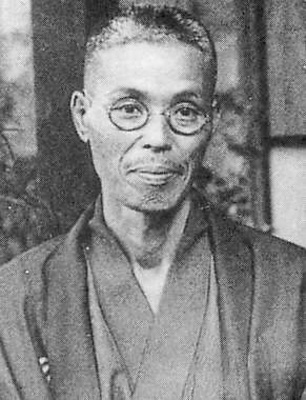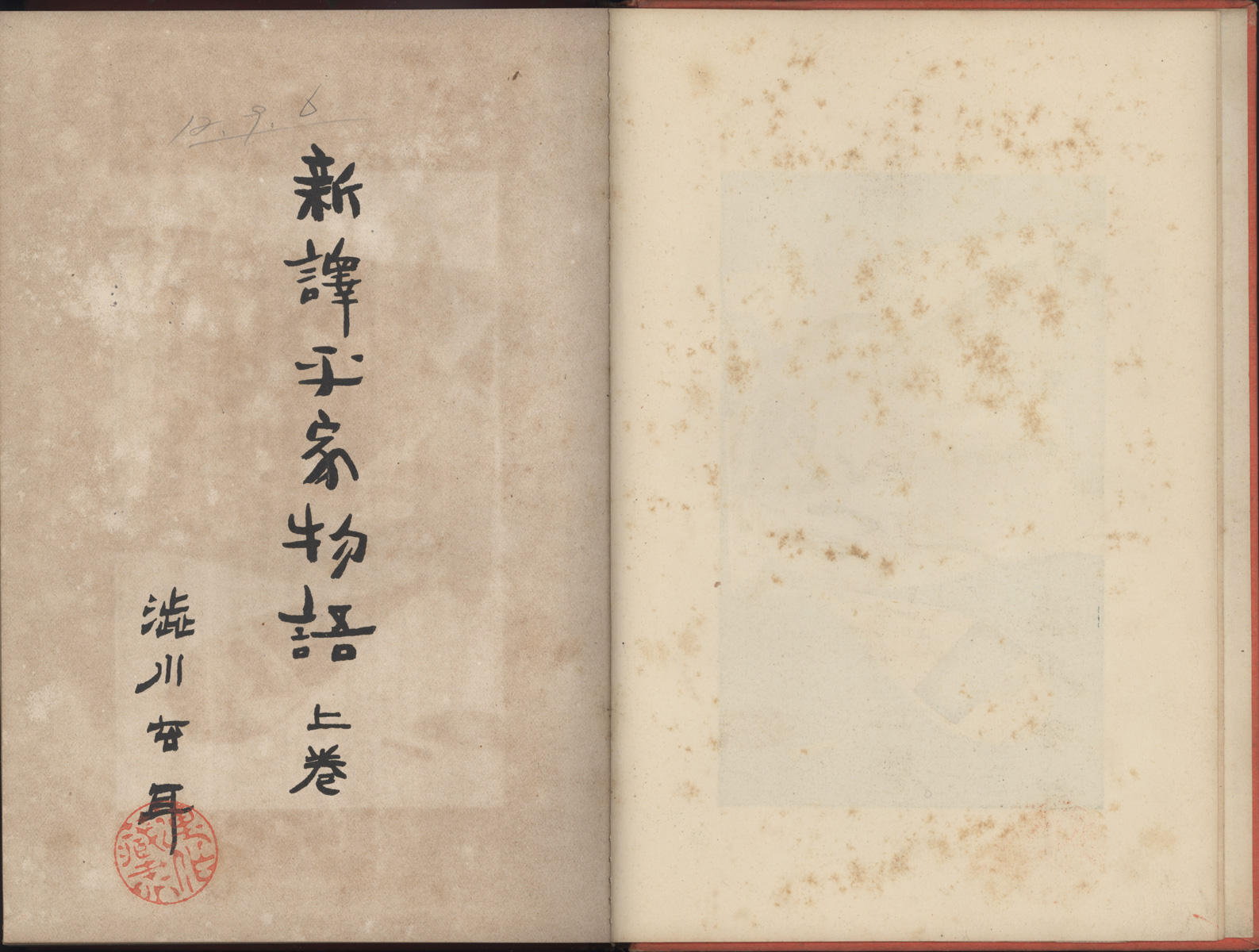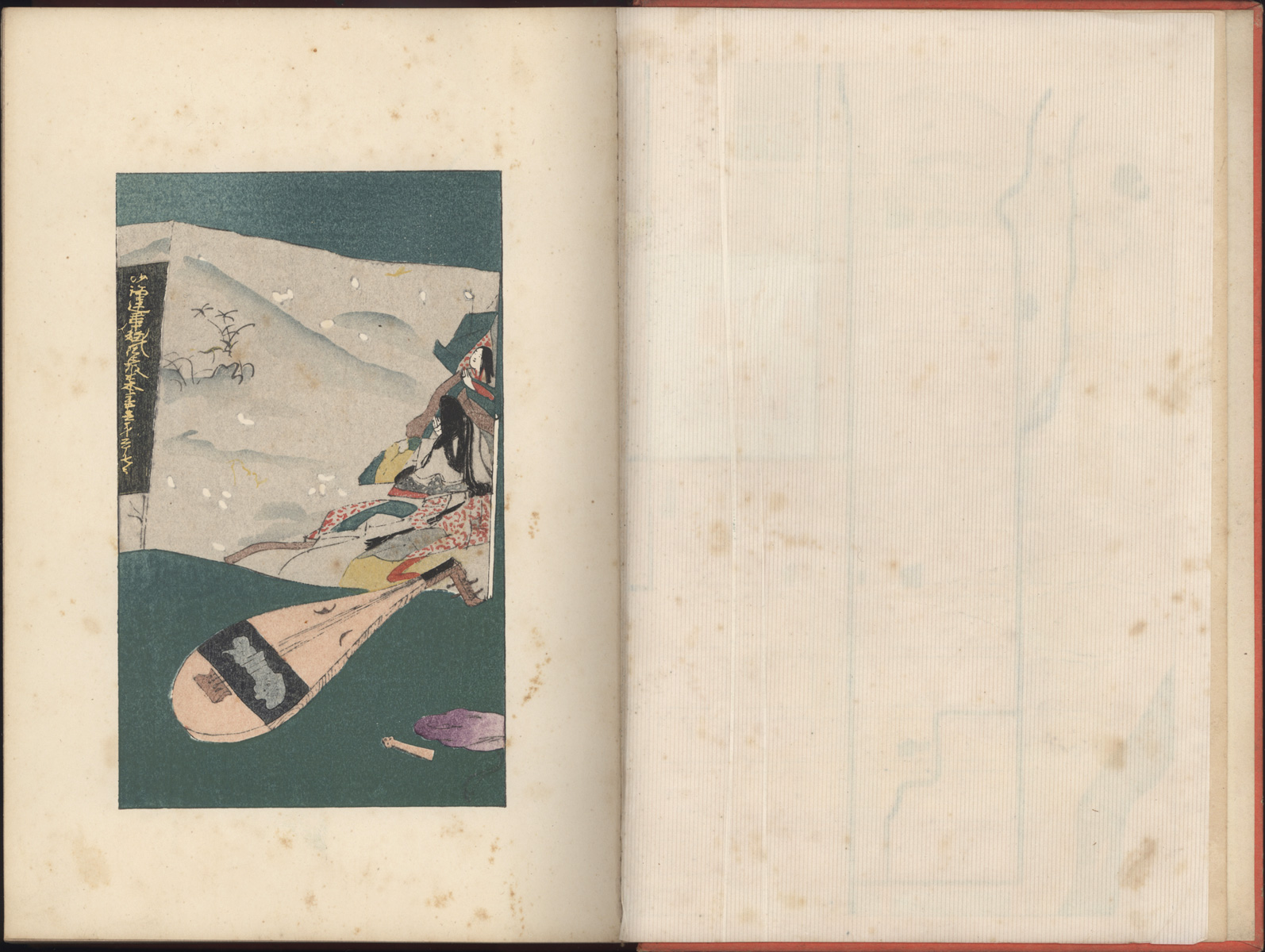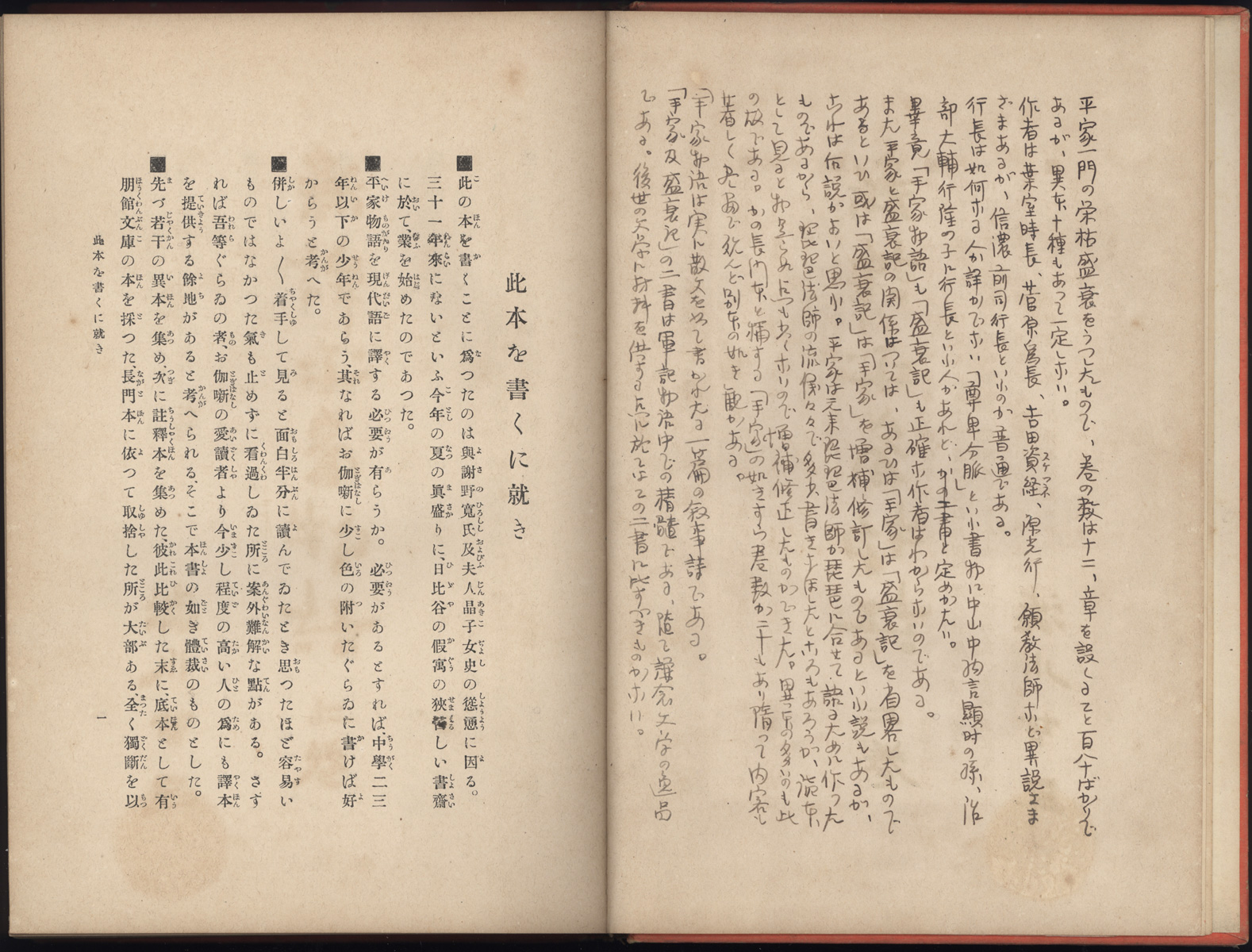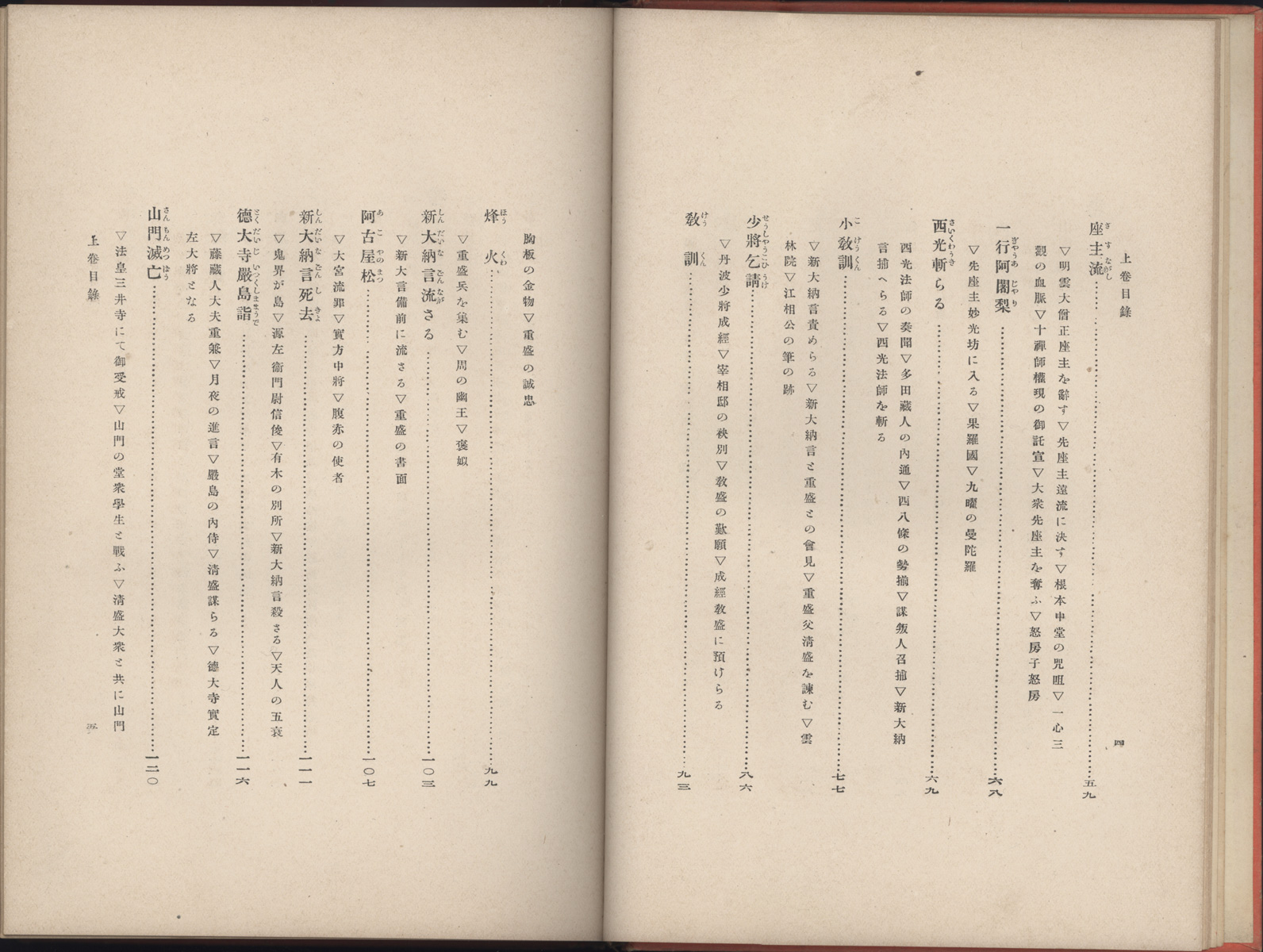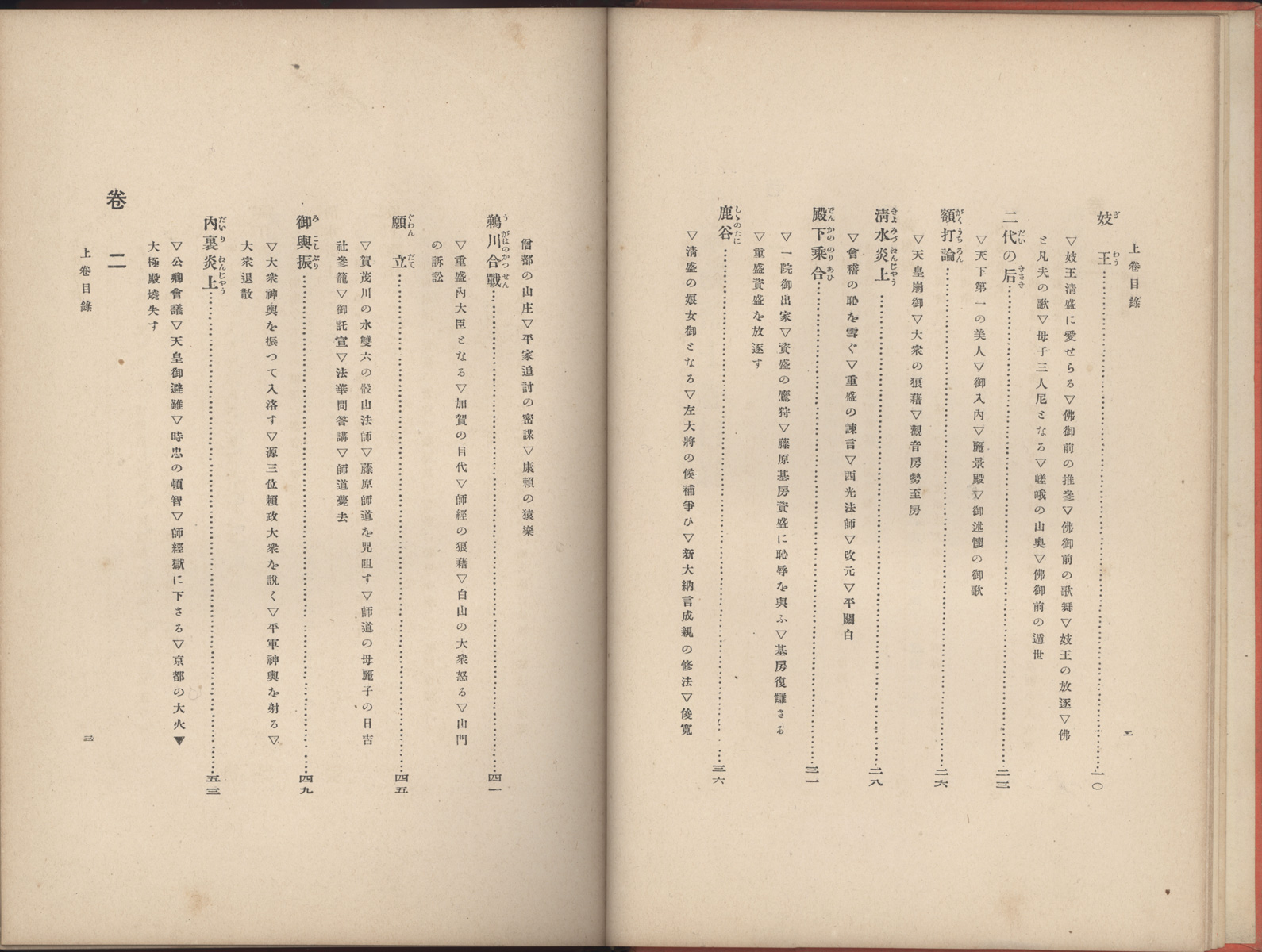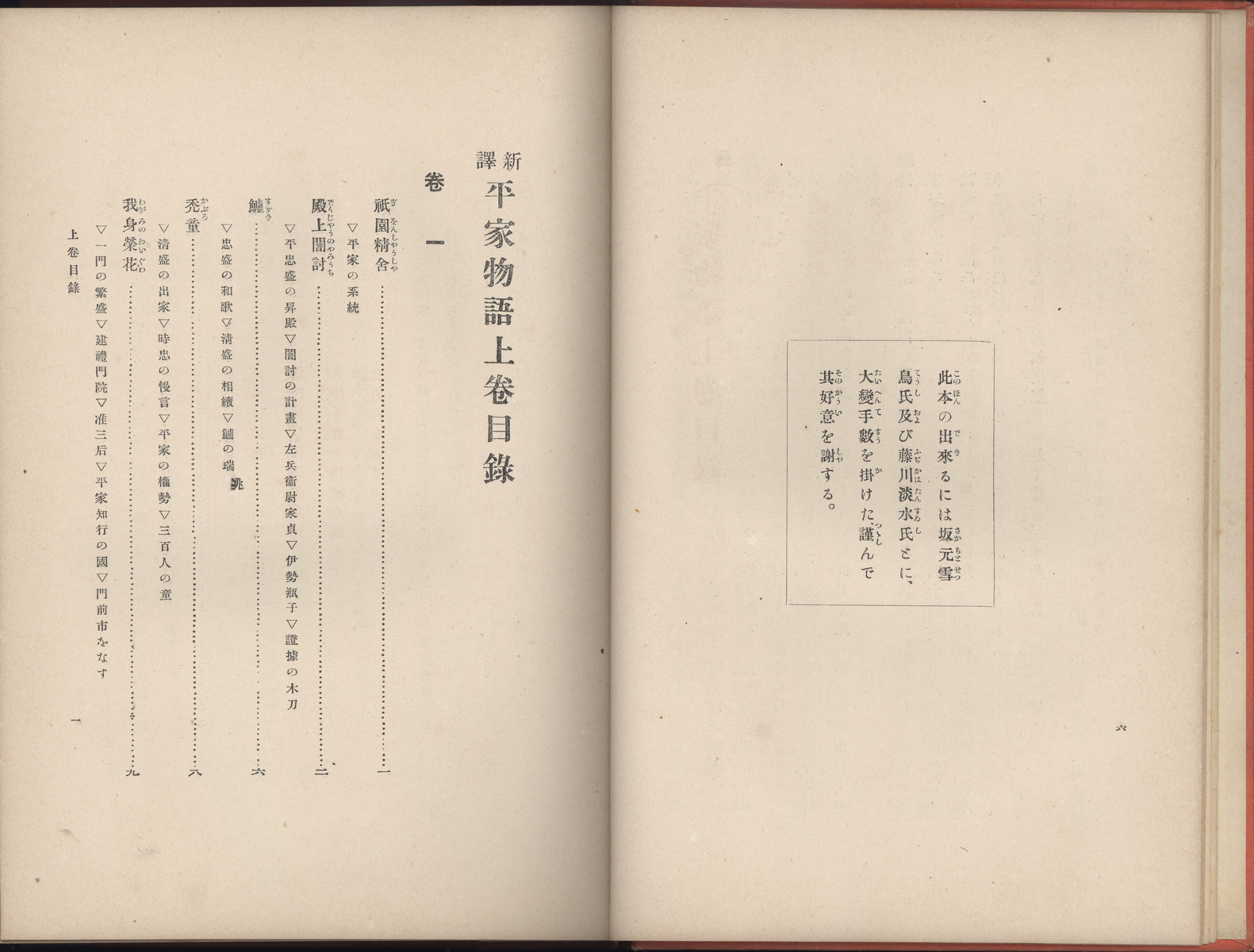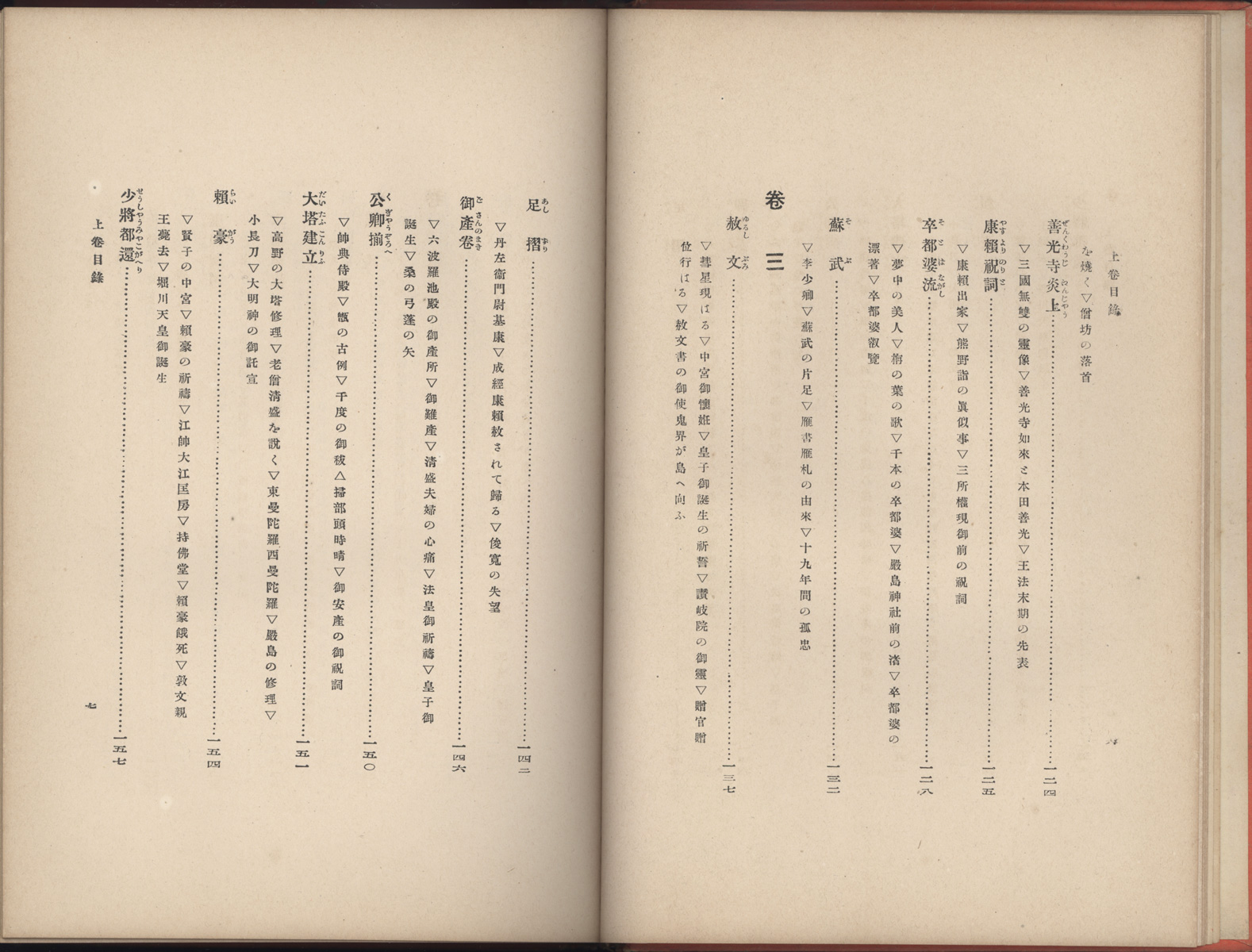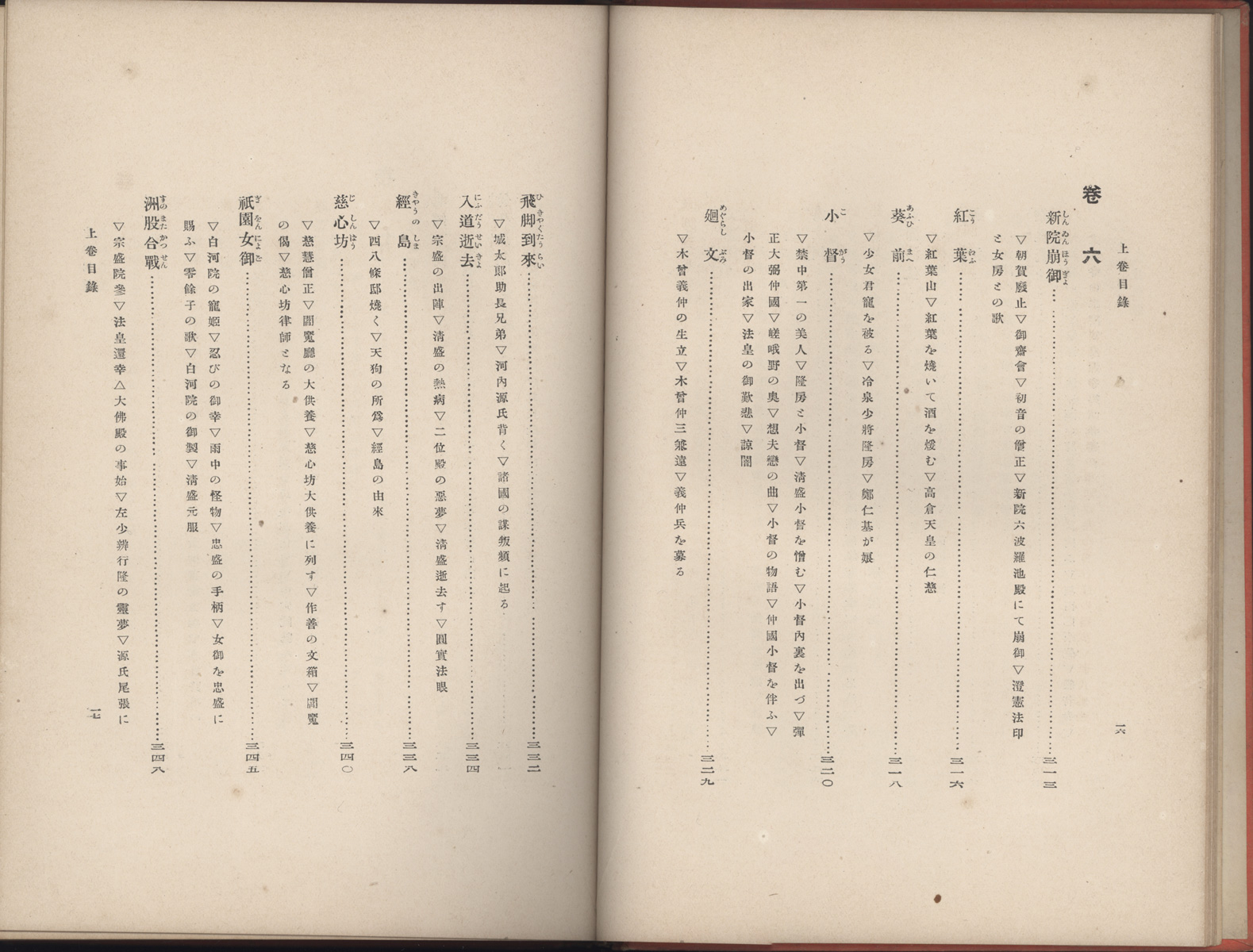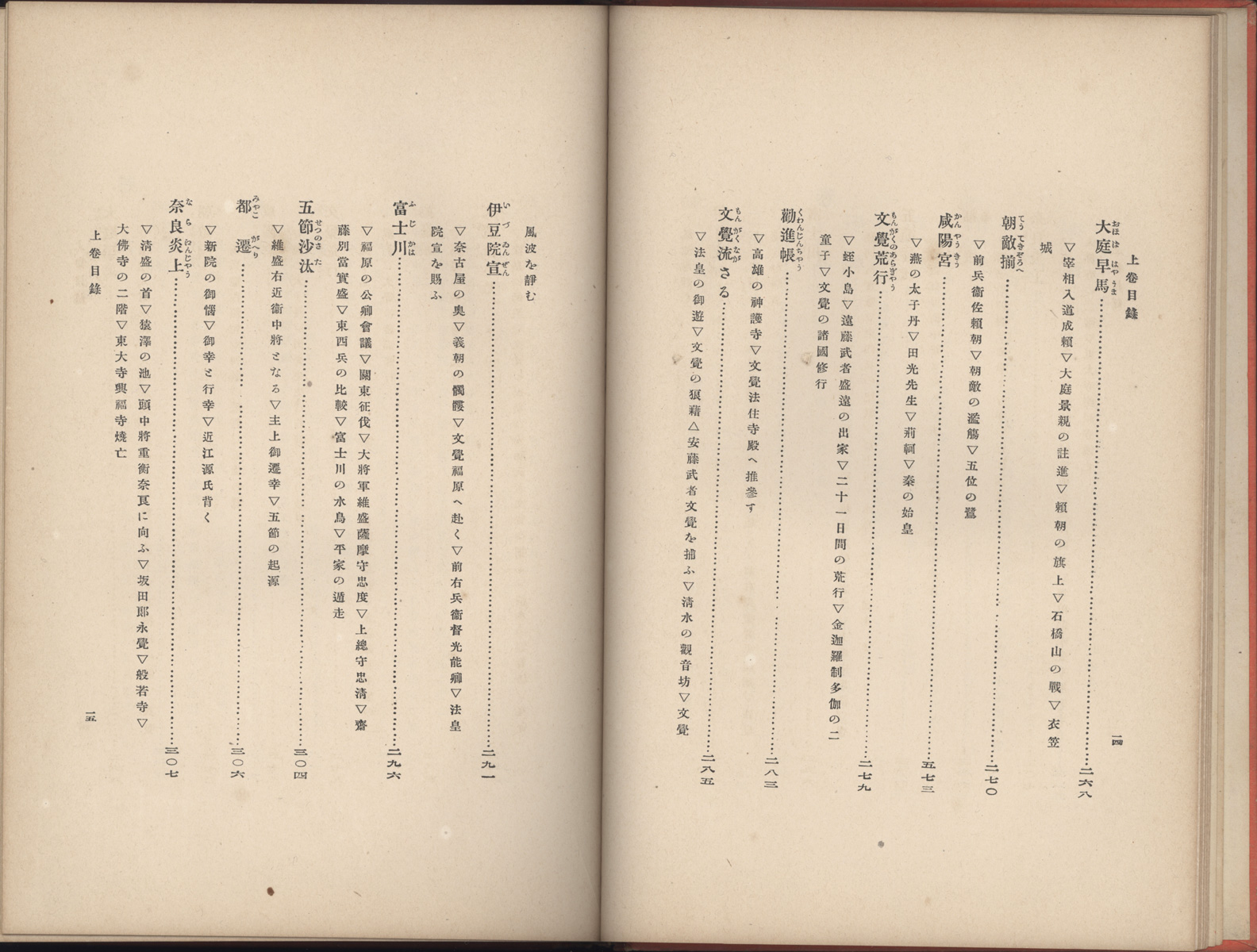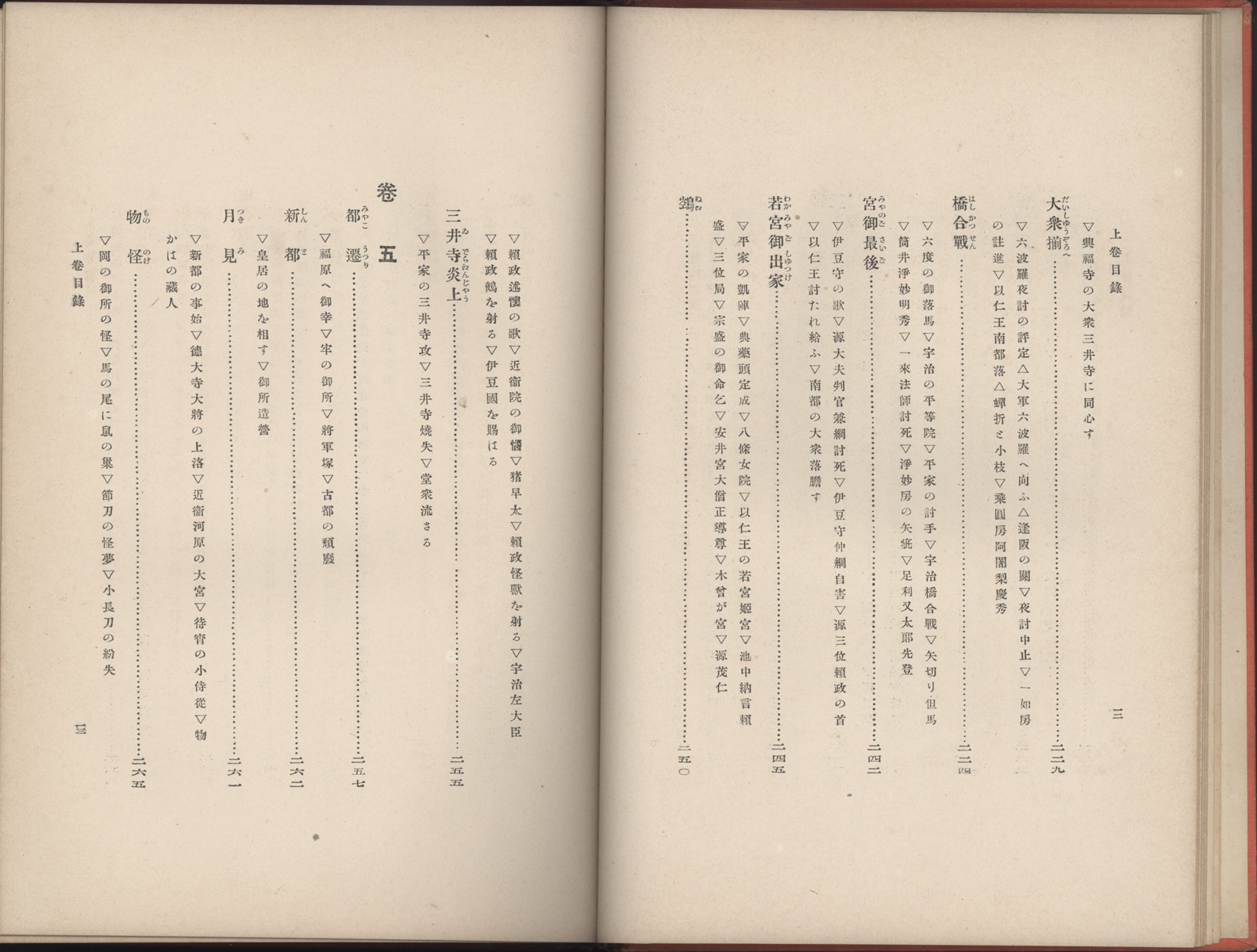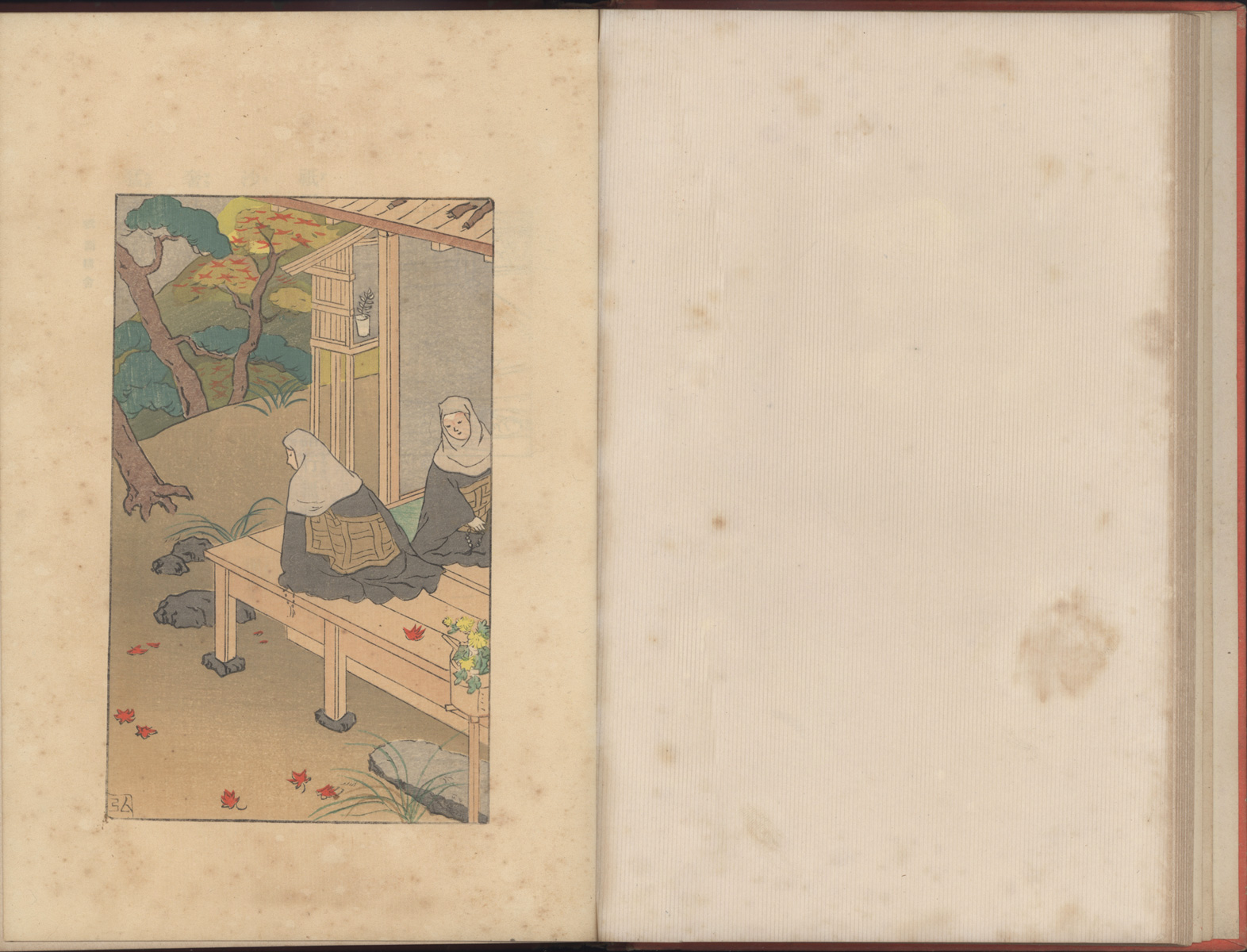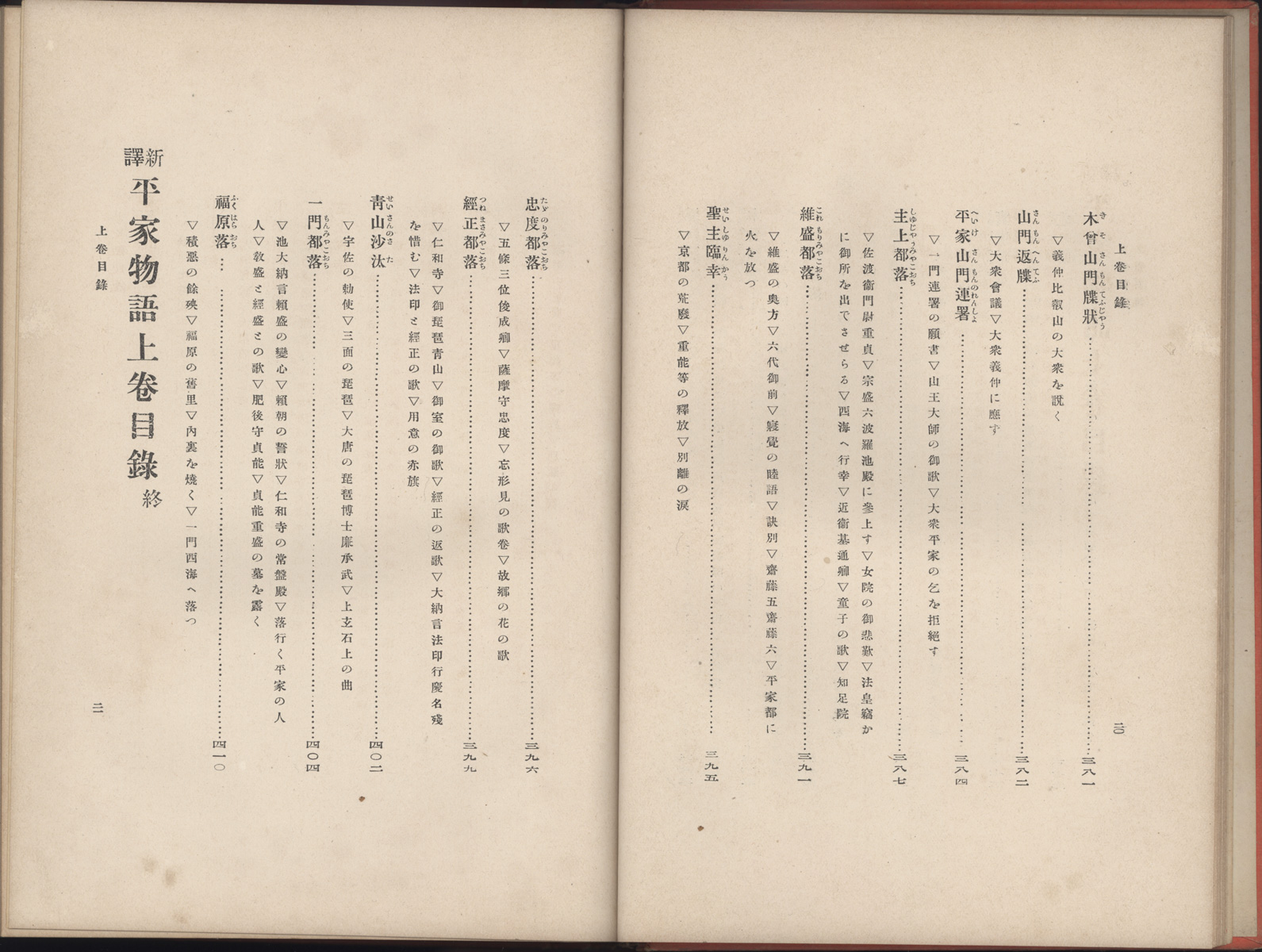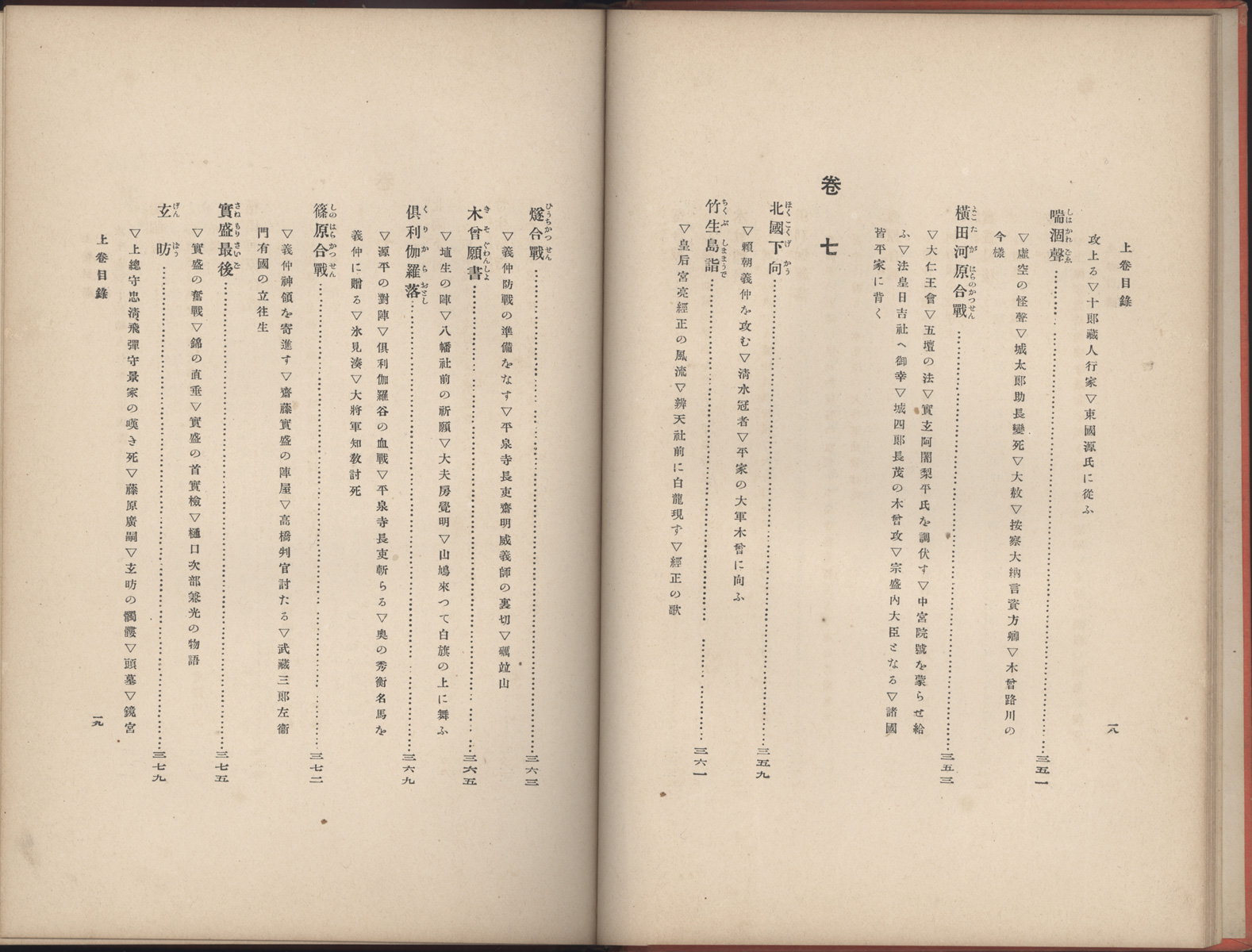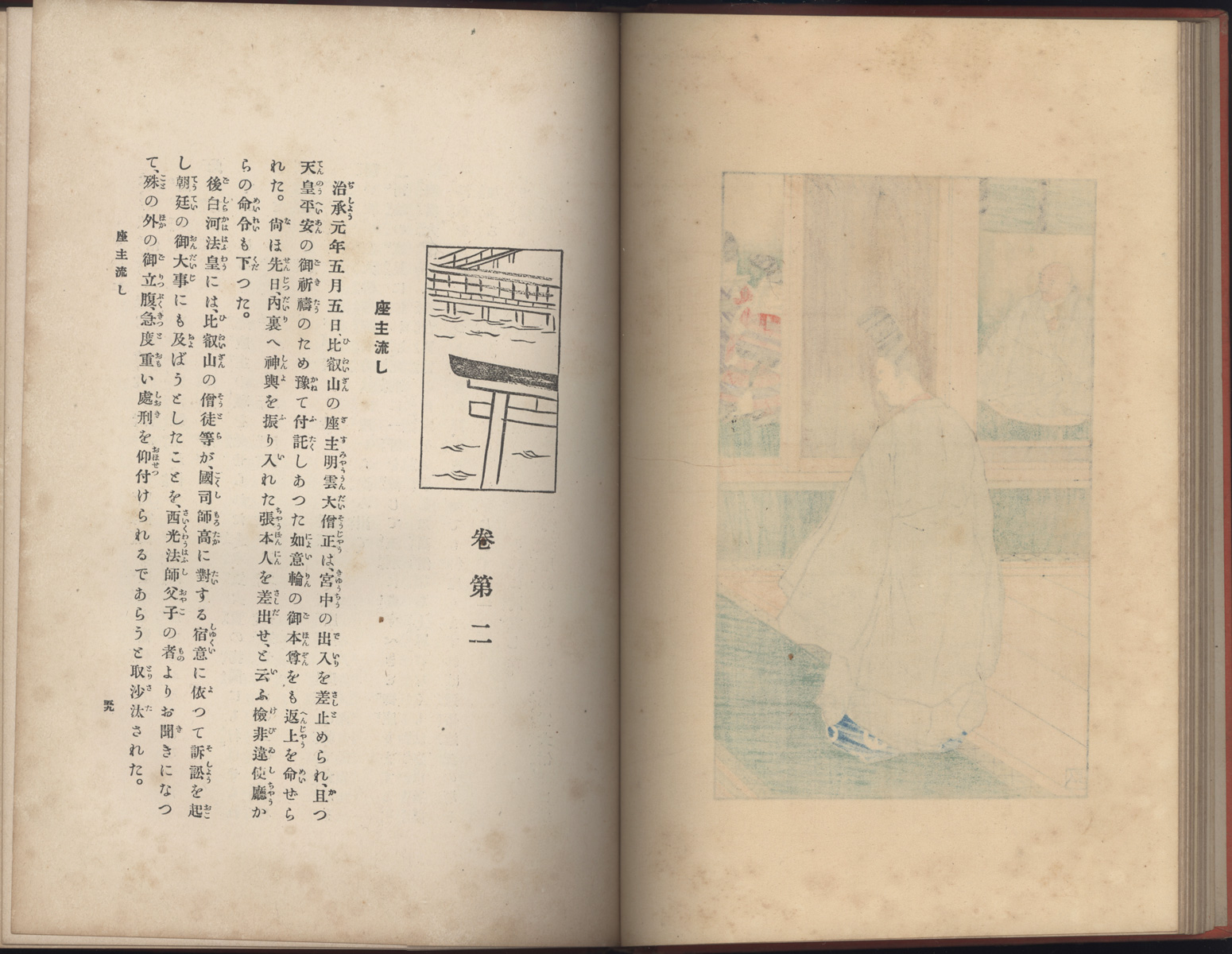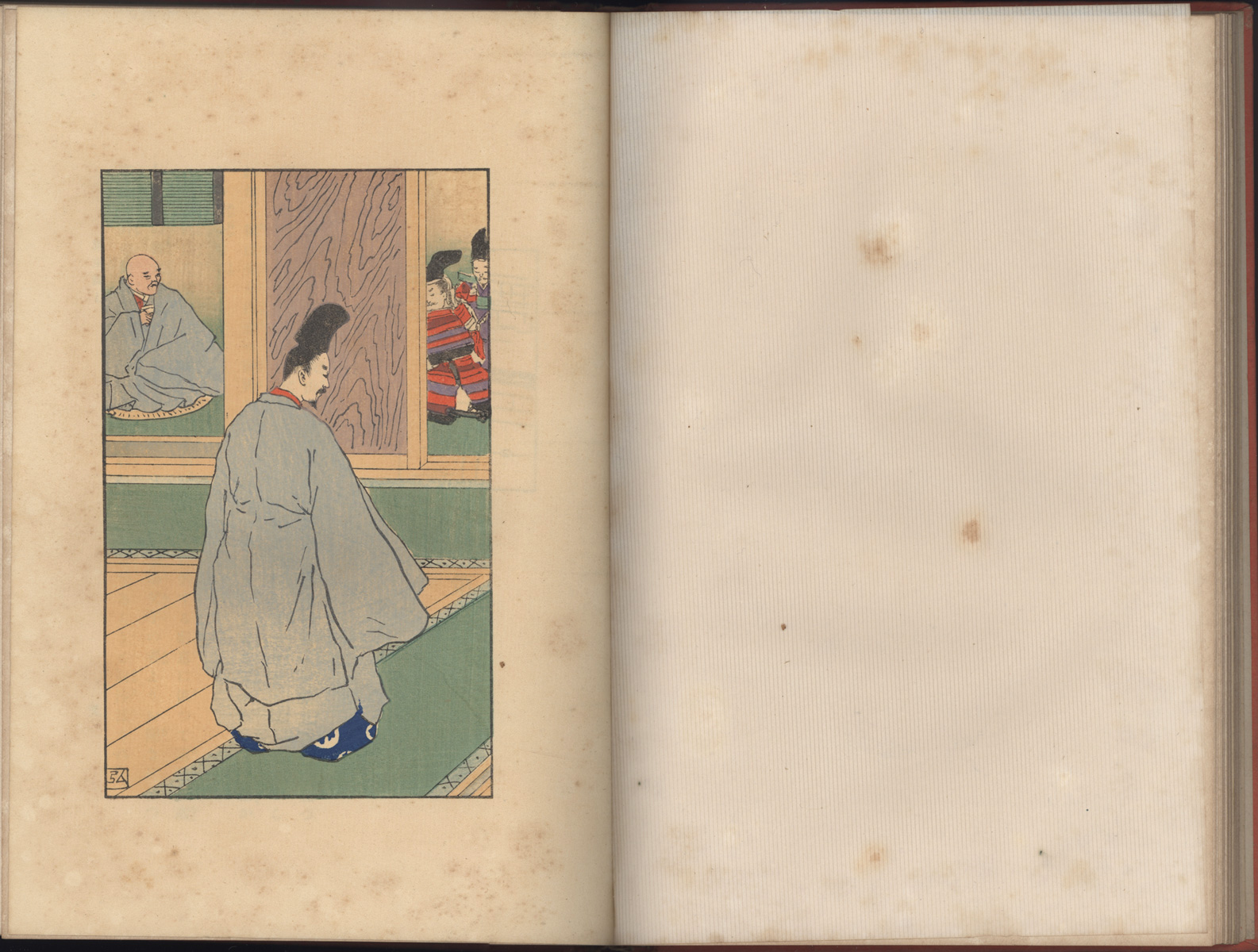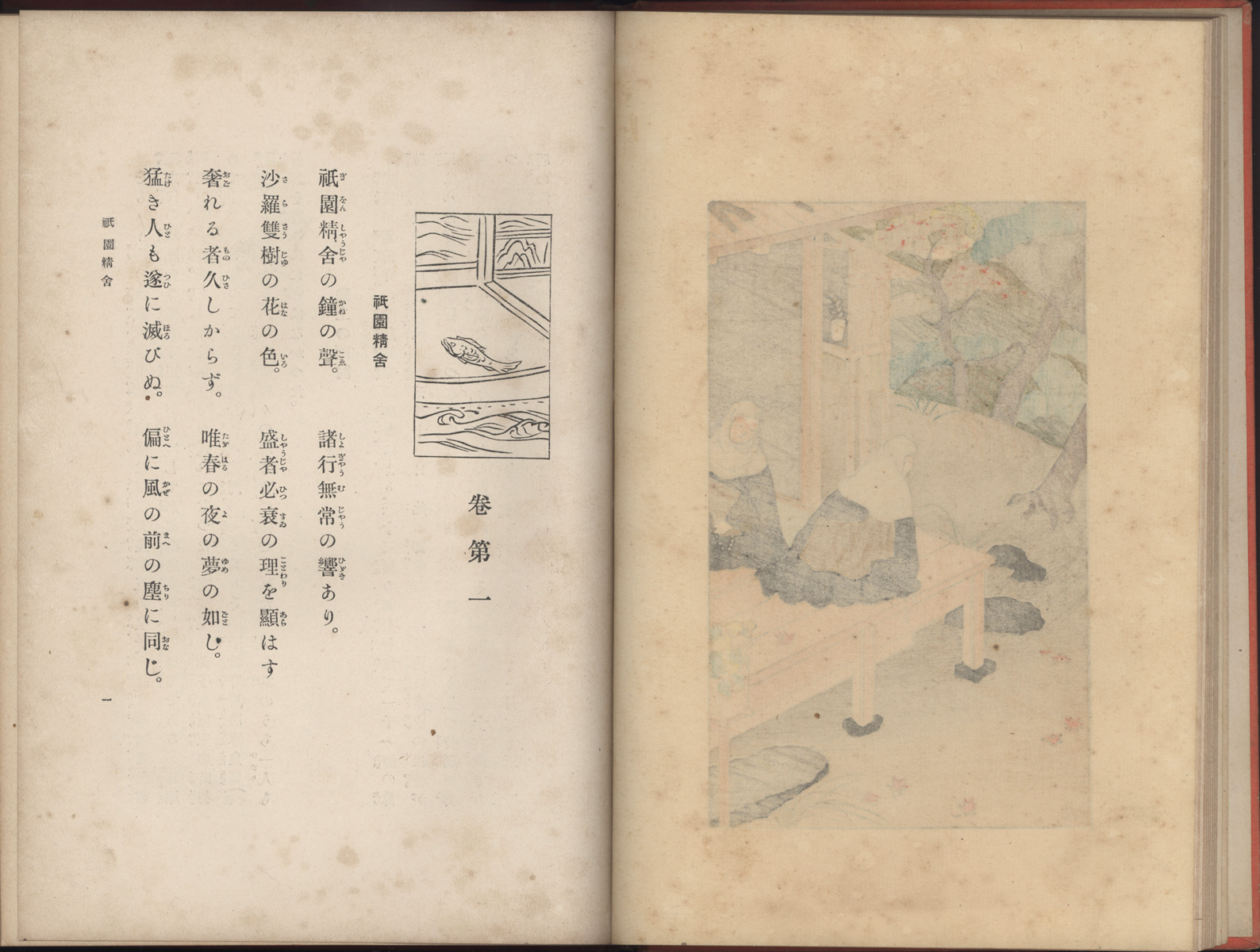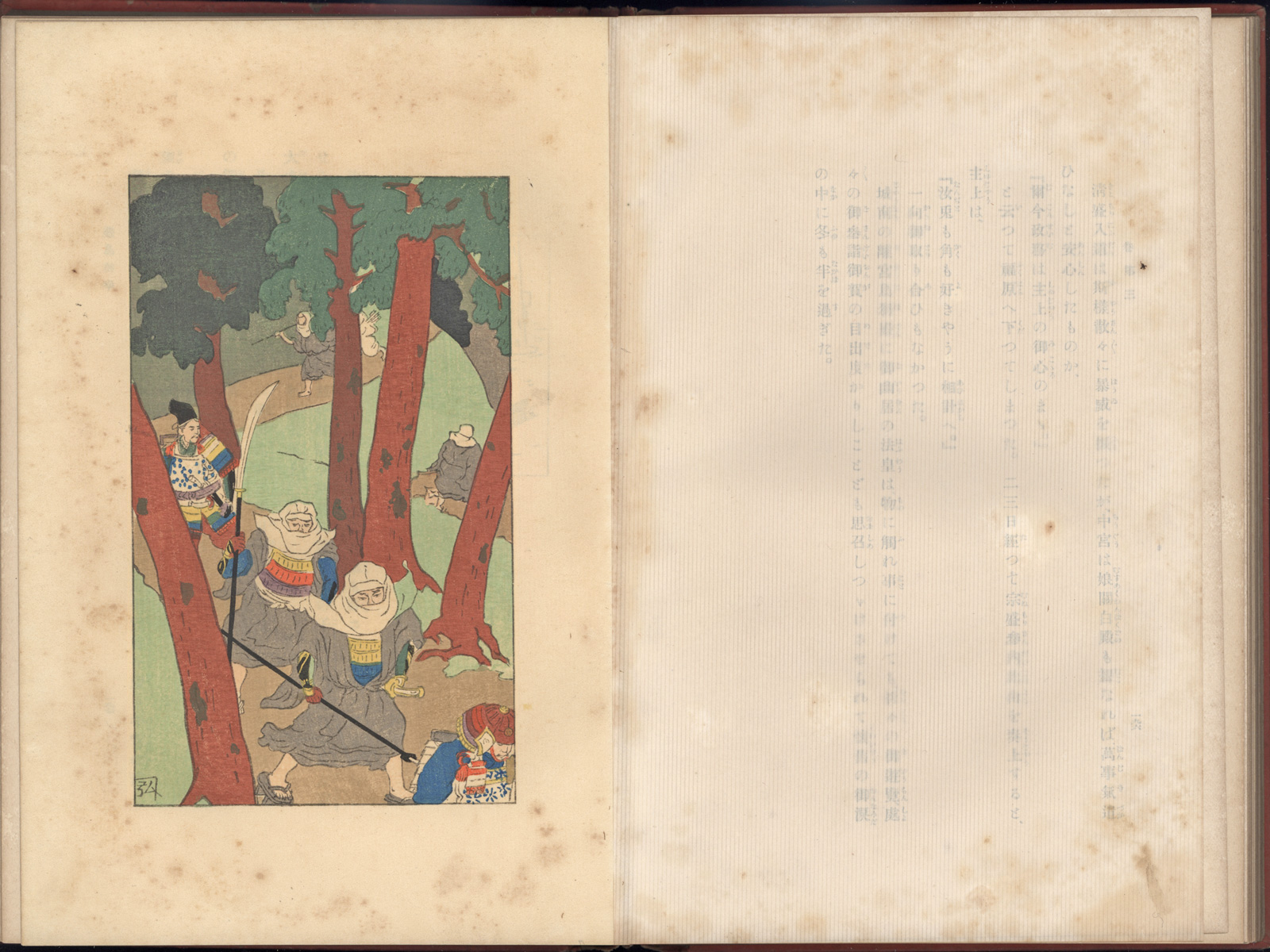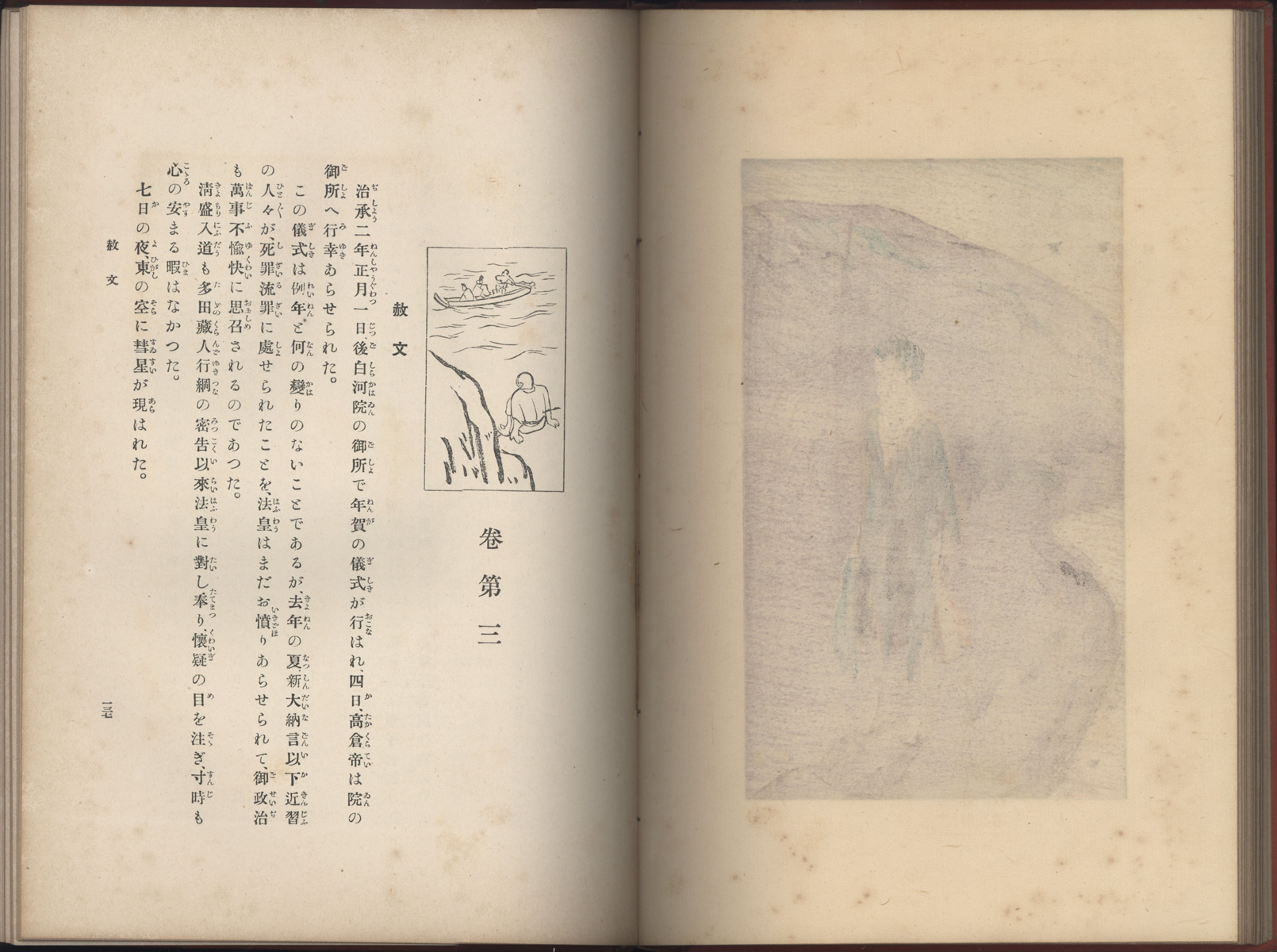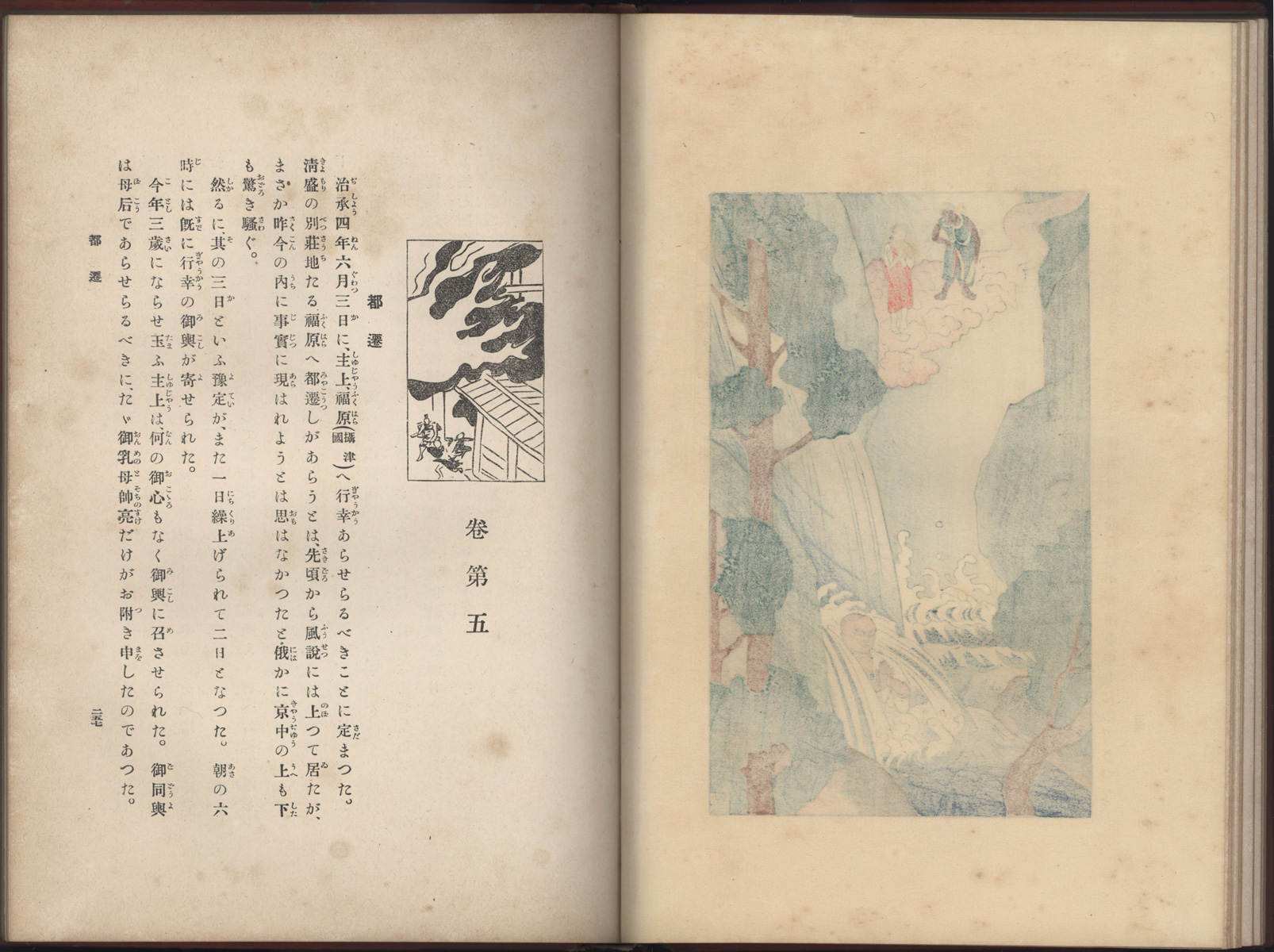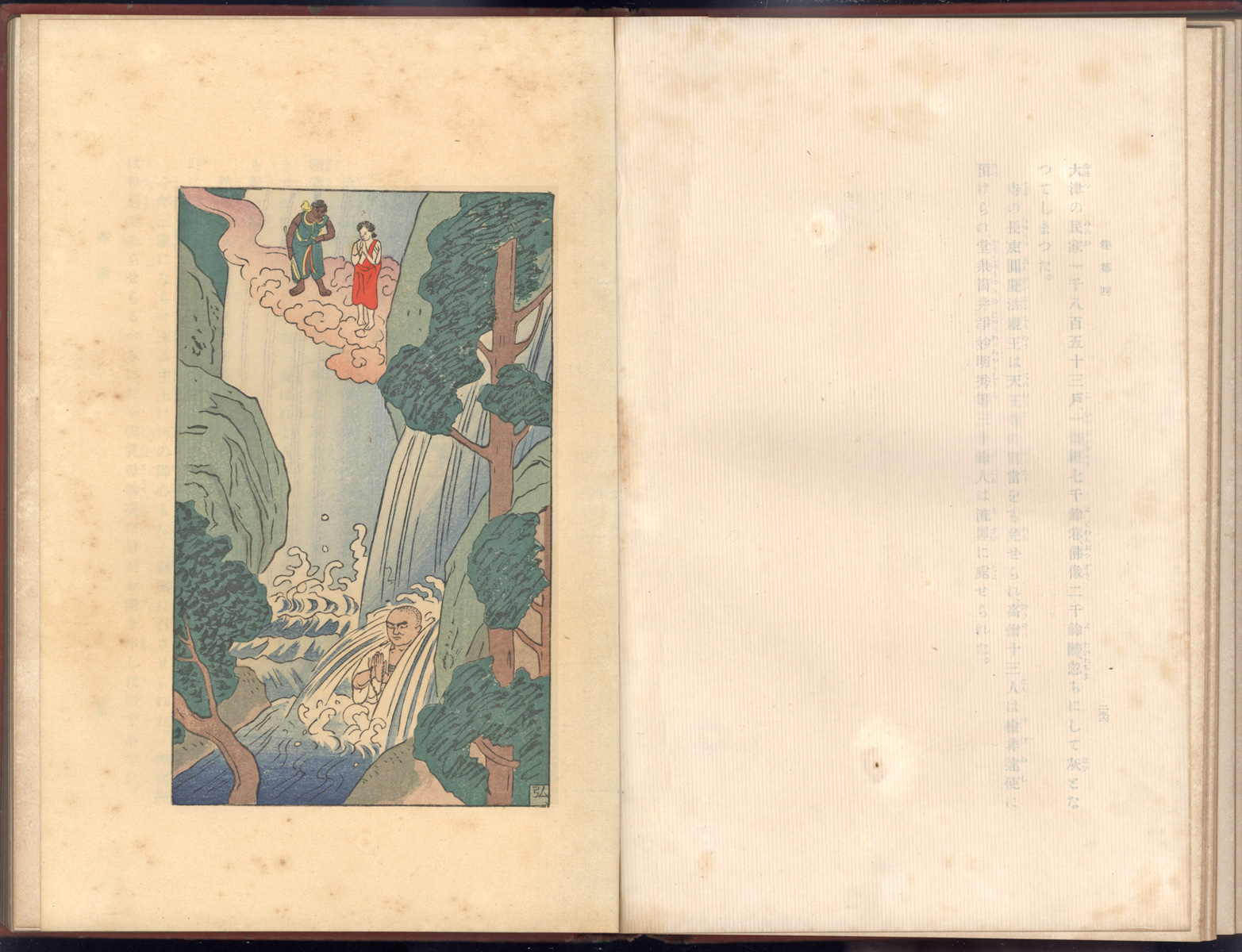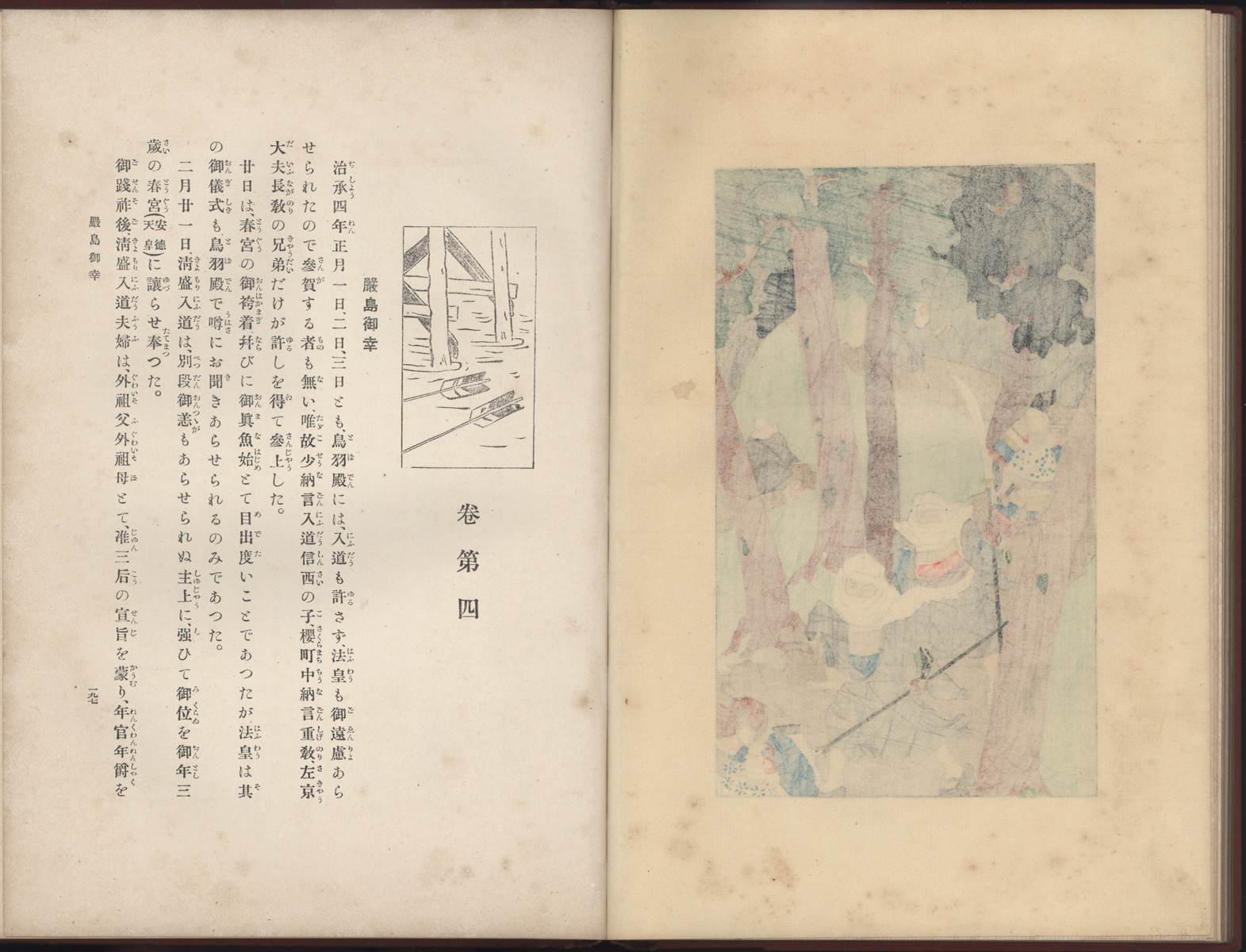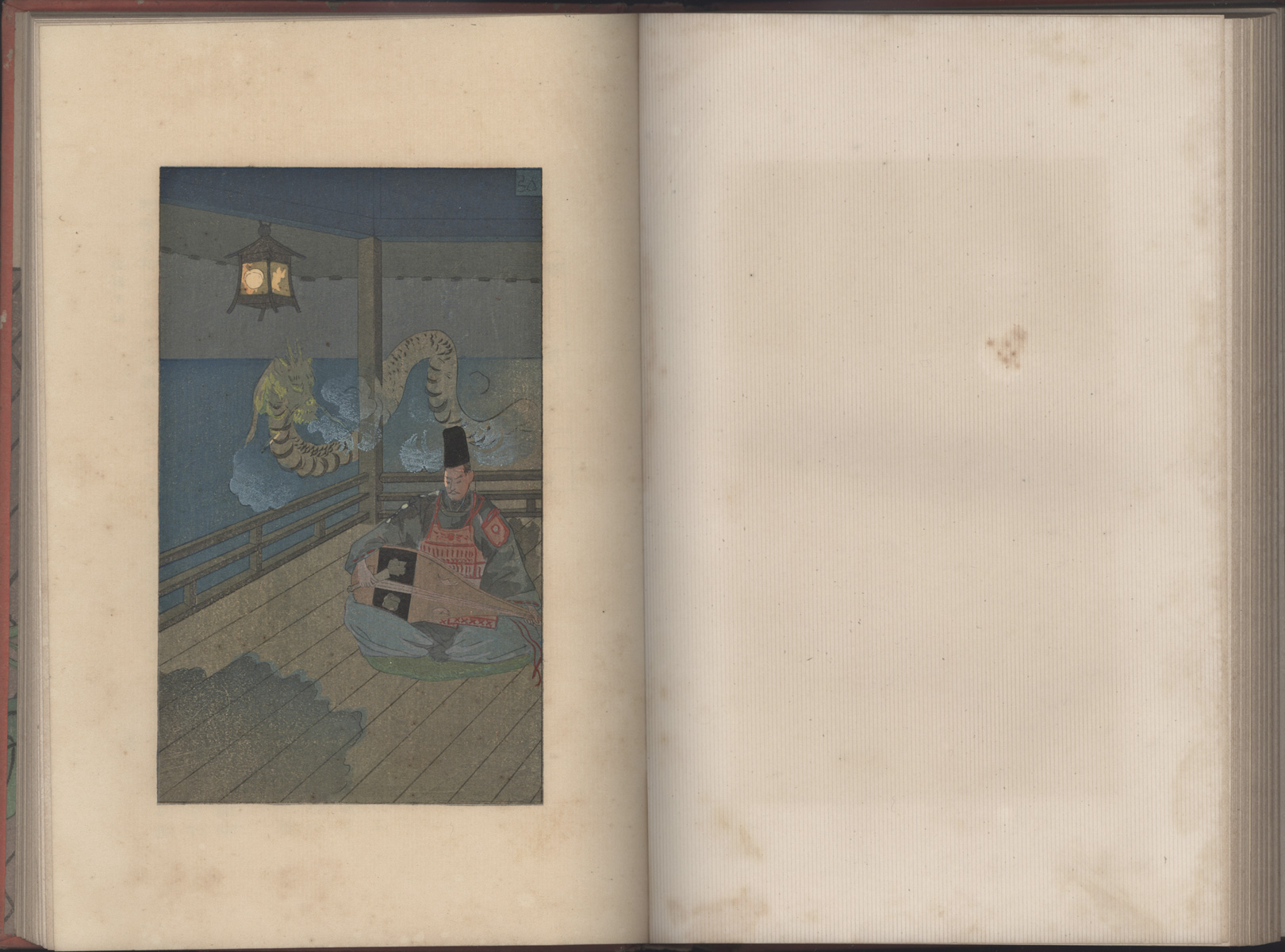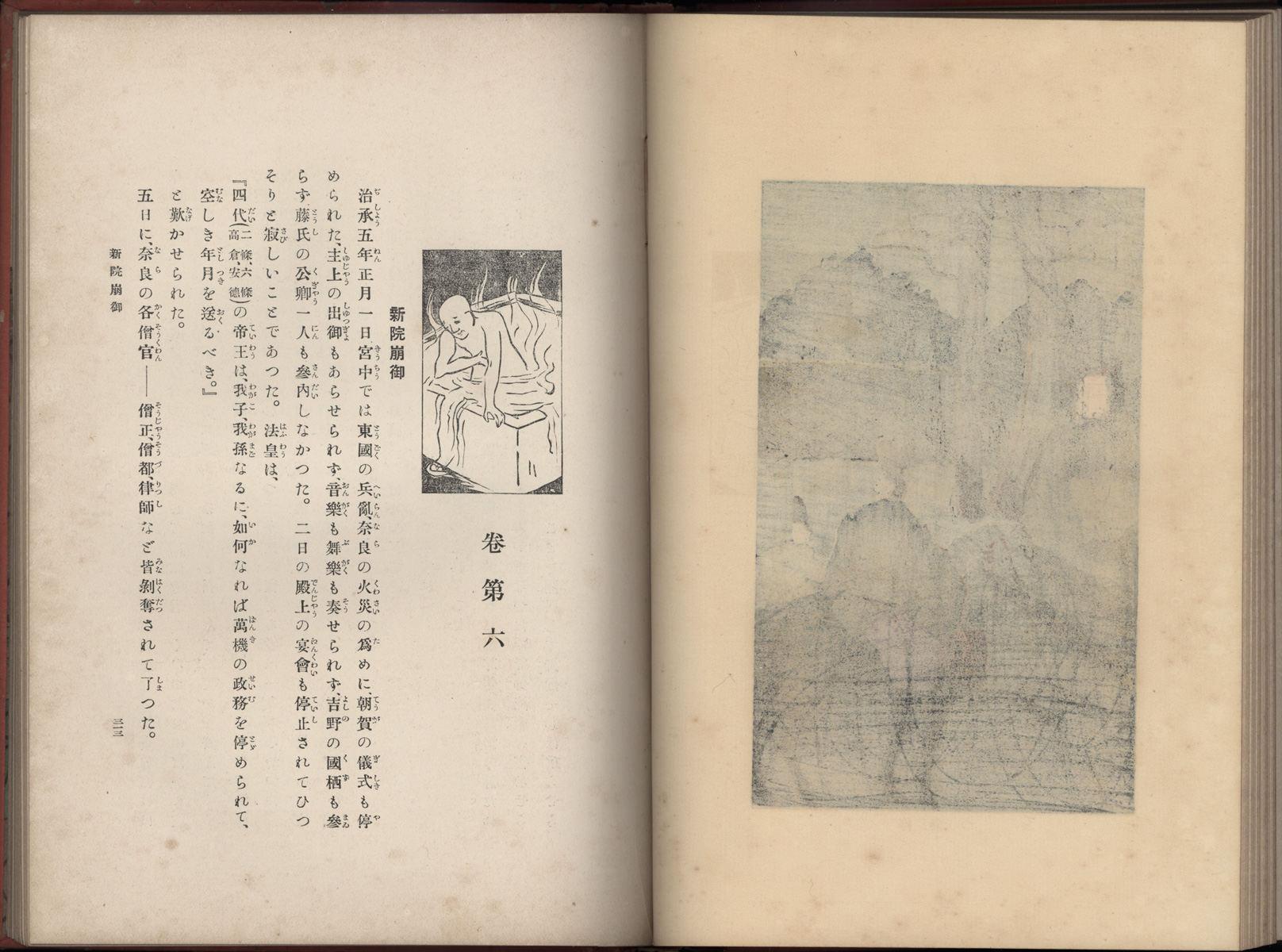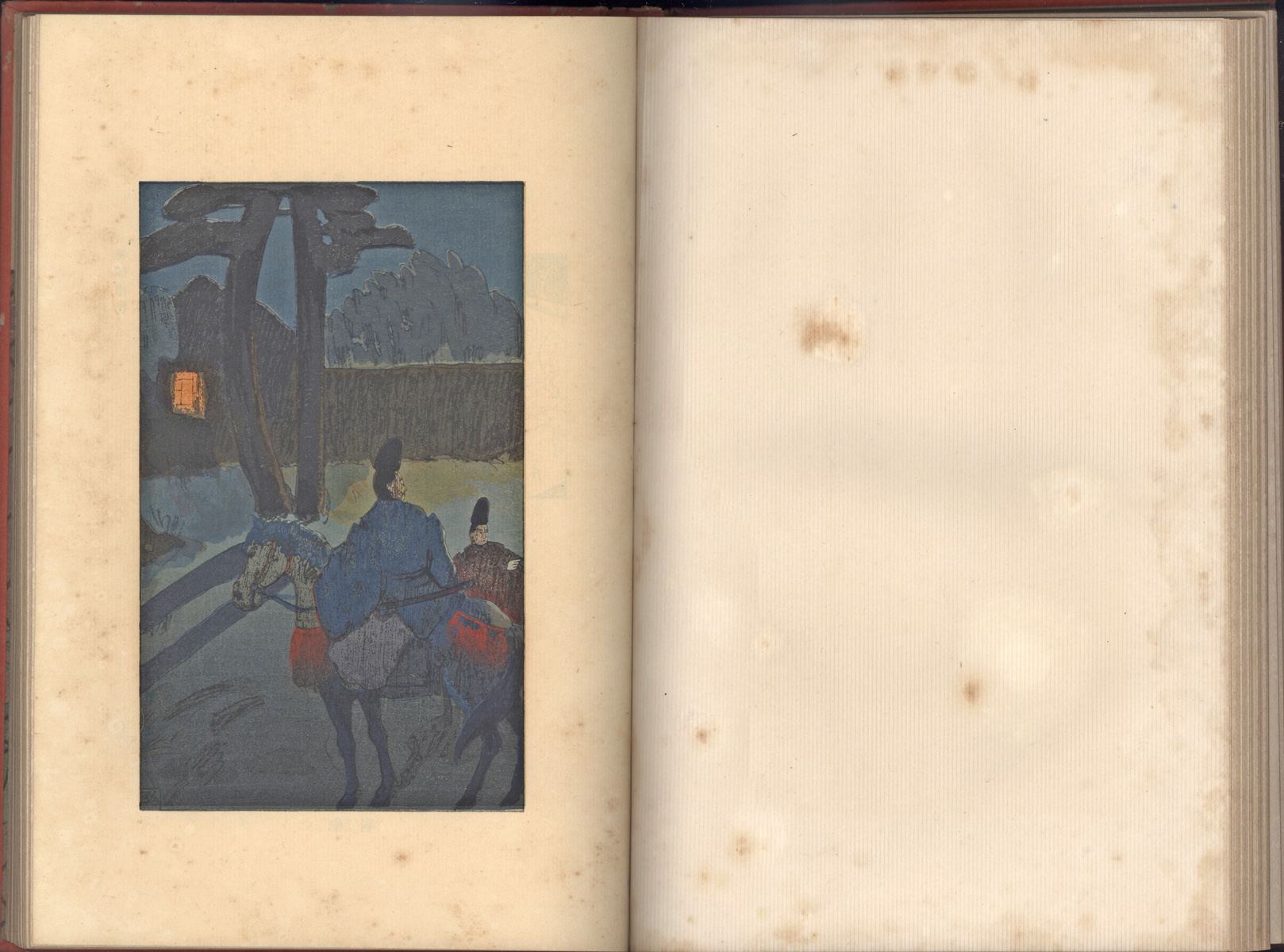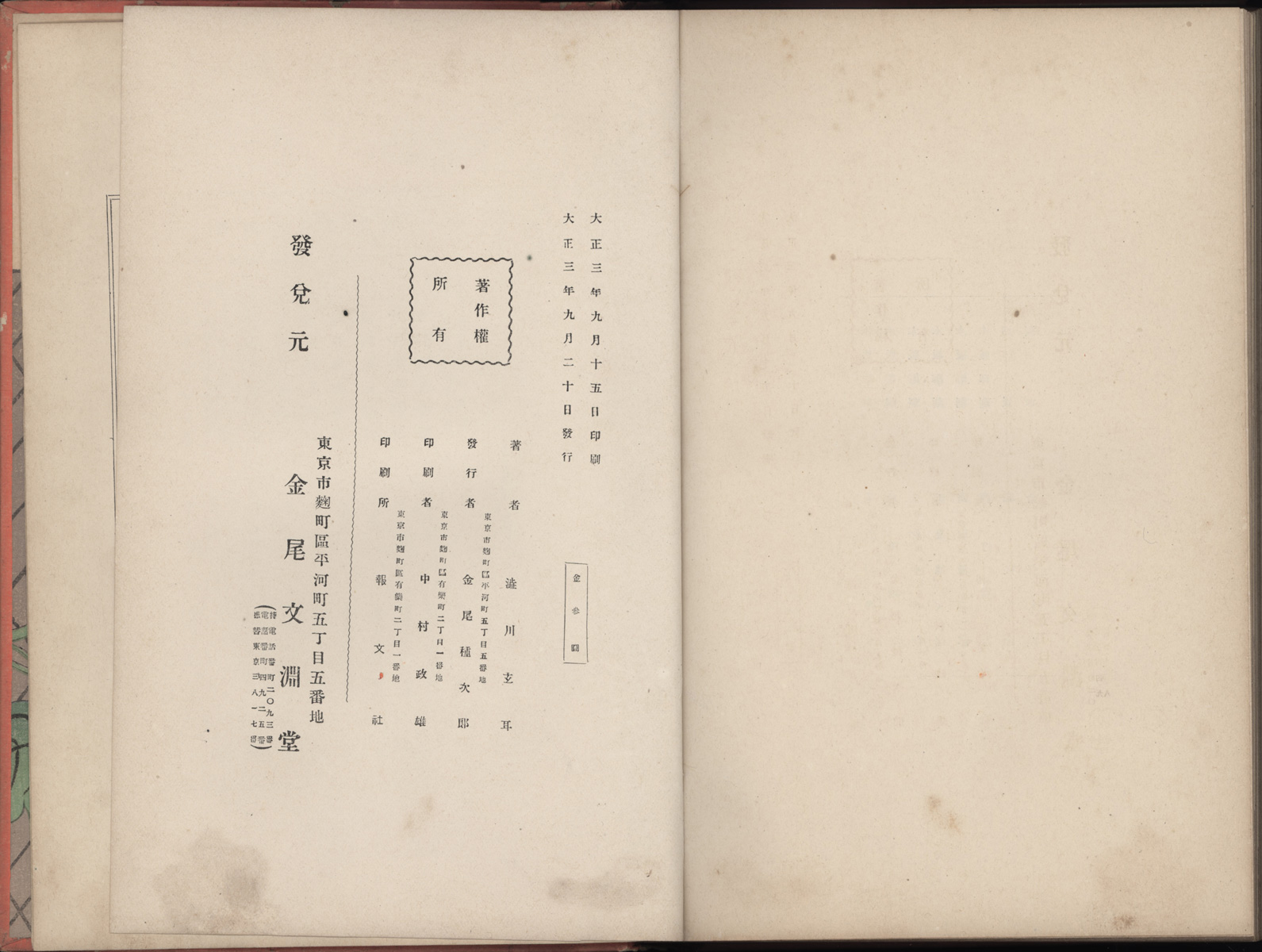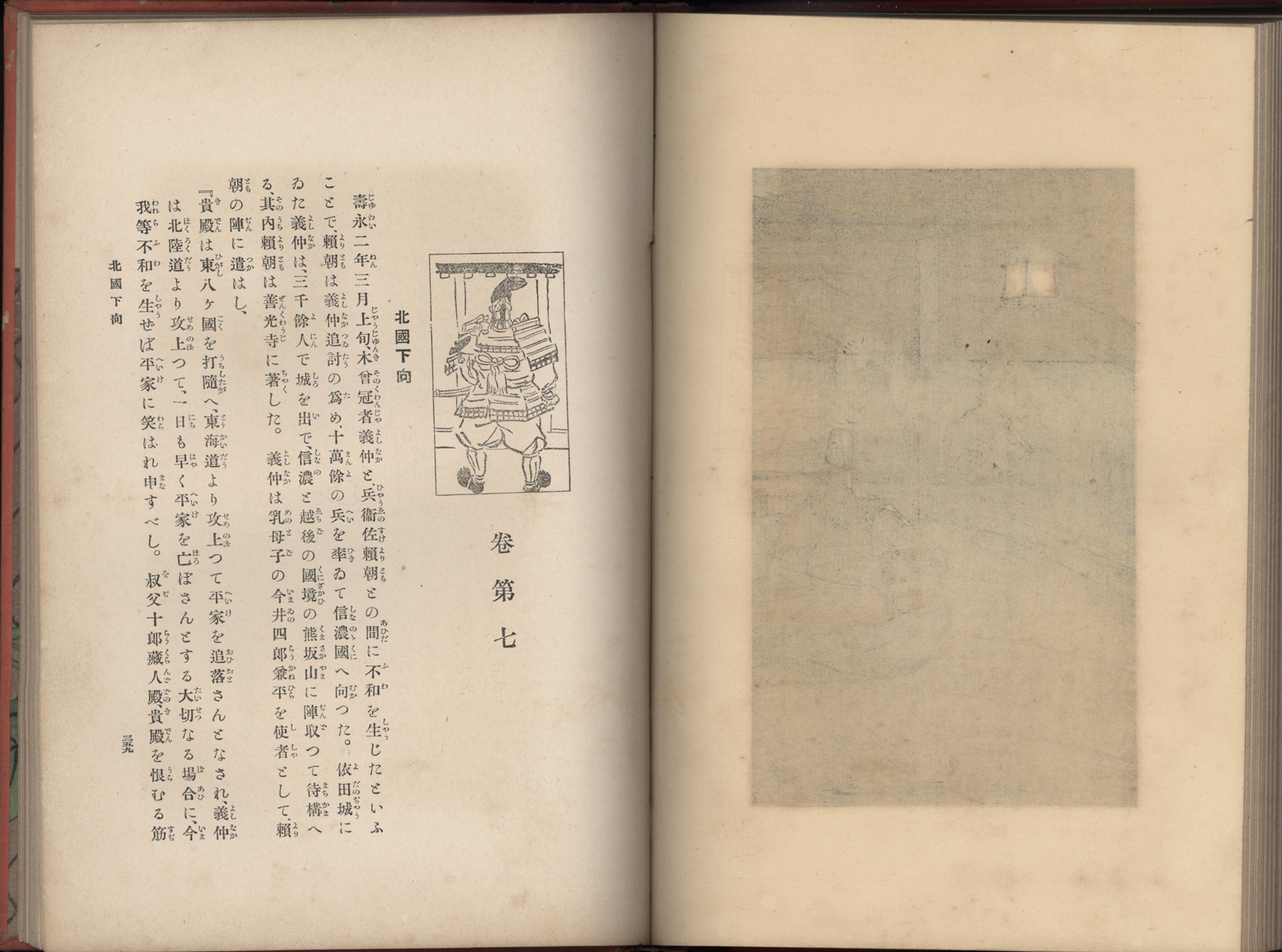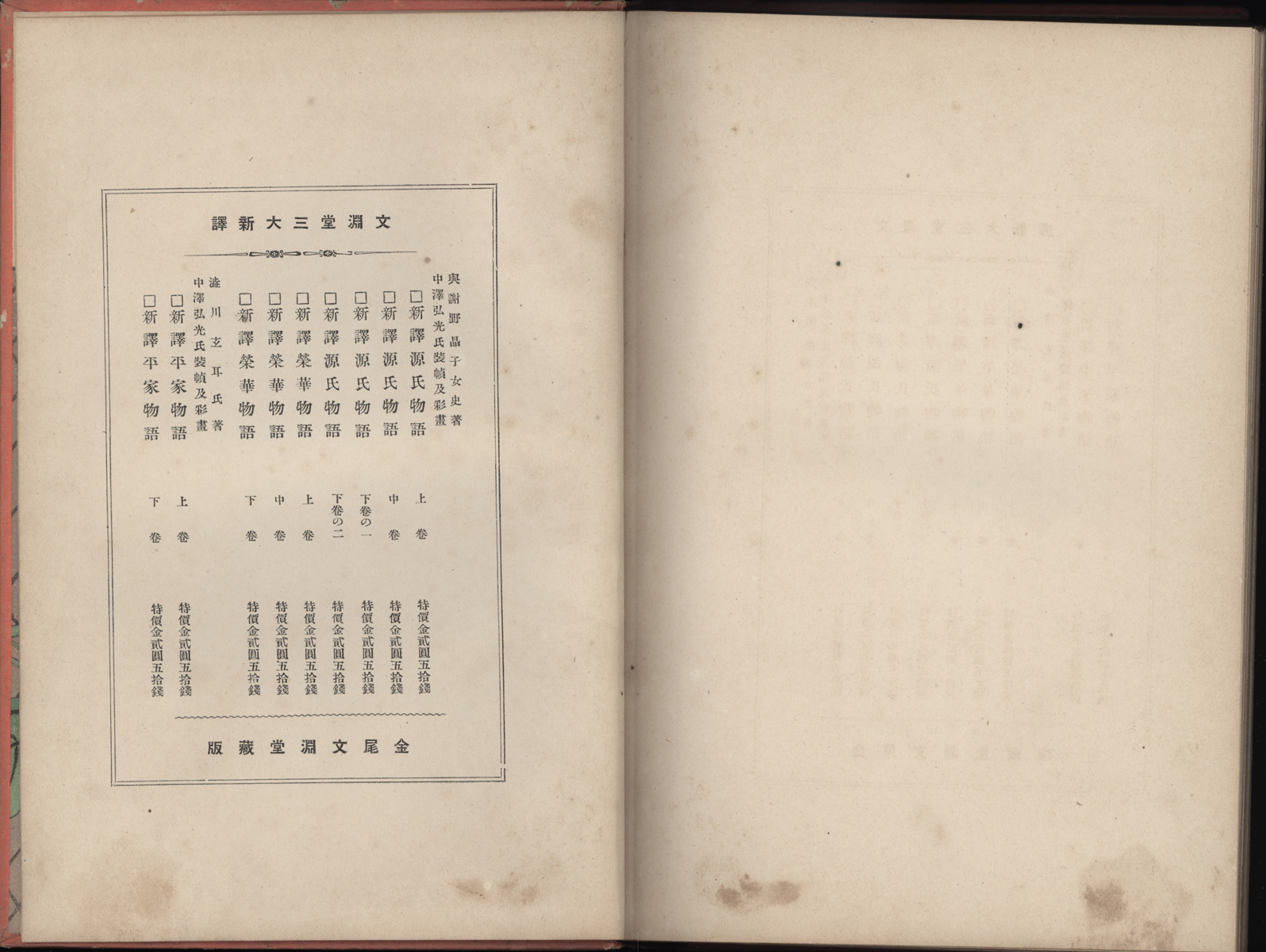About This Book
The sound of the Gion Shōja bells echoes the impermanence of all things; the color of the sala flowers reveals the truth that the prosperous must decline. The proud do not endure, they are like a dream on a spring night; the mighty fall at last, they are as dust before the wind. - the first lines of Heike monogatari
The first volume of a two volume "new translation" into modern colloquial Japanese by journalist, author and poet Shibukawa Genji, of The Tale of the Heike (Heike monogatari, 平家物語), an epic account of the struggle between the Heike (Taira) and Minamoto (Genji) clans for control of Japan at the end of the twelfth century in the Gempei War (1180-1185). Published by Kanao Tanejirō through his publishing house Kanao Bun'endō in 1914 in two volumes, it was illustrated with woodblock prints designed by the Western-style artist Nakazawa Hiromitsu (1874-1964). This first volume contains the first seven chapters with each chapter having multiple sections.
Similar in physical composition to the famous and best-selling work Shin'yaku Genji Monogatari by Yokano Akiko (see IHL Cat. #2219), this translation seemed to have garnered rather little attention, although more research might bring additional facts to light.
The Tale of the Heike
Sources: The Tale of the Heike, Helen Craig McCullough, Stanford University Press, 1988 and website of New World Encyclopedia
The Tale of the Heike (Heike monogatari, 平家物語) was compiled in 1240 by an unknown author from a collection of oral stories composed and recited by traveling monks, who chanted them to the accompaniment of the biwa (lute). The most widely read version of the Heike monogatari was compiled by the blind monk Kakuichi in 1371, and includes later revisions glorifying military valor. The story is intended to be told in a series of nightly installments. Written in the genre of gunki monogatari (military tales), the story illustrates themes of samurai ethics and glorifies the military values of loyalty, bravery, and strong leadership. It also promulgates Buddhist teachings; the theme of the impermanence of the material world appears throughout the story, and the fates of the characters are preordained by the good or evil deeds of prior existences. Often characters seek enlightenment, or atone for their sins, by entering religious life. The Tale of the Heike is considered one of the great classics of medieval Japanese literature and has provided material for many later artistic works ranging from Noh plays to woodblock prints.
In the words of Helen Craig McCullough, it is the story "of a proud and mighty man, Taira no Kiyomori, of his contumacy, 'freakish caprices,' and selfishness, and of the destruction visited on his descendants in accordance with the law of karmic retribution."1
1 The Tale of the Heike, Helen Craig McCullough, Stanford University Press, 1988, p. 456.
The Author/Translator of "The New Translation"
undated photograph of the authorsource: Wikipedia Japan Sources: https://www.wul.waseda.ac.jp/kosho/bunko10/b10_8807/ and Wikipedia Japan
Shibukawa Genji 渋川玄耳 (1872-1926)
Known for his light and witty essays under the pen name Yabuno Mukuju (籔野椋十) and his renovation of the city news page of the Tokyo asahi shinbun, Shibukawa Genji was born in Saga prefecture. His real name is Shibukawa Ryūjirō 渋川柳次郎. Graduating from Tokyo Law School, he practiced law and became a judge prior to turning to poetry and journalism.
In 1909, it was he who put Ishikawa Takuboku (later a leading tanka poetry figure who was almost nameless at the time) in charge of selecting good poems for the "Asahi kadan" column from among those submitted by readers and providing commentary. After retiring from the Asahi, Shibukawa went to the Chinese continent as a war correspondent for the Kokumin shinbun [National Newspaper].
undated photograph of the author
source: Wikipedia Japan
Shibukawa Genji 渋川玄耳 (1872-1926)
Known for his light and witty essays under the pen name Yabuno Mukuju (籔野椋十) and his renovation of the city news page of the Tokyo asahi shinbun, Shibukawa Genji was born in Saga prefecture. His real name is Shibukawa Ryūjirō 渋川柳次郎. Graduating from Tokyo Law School, he practiced law and became a judge prior to turning to poetry and journalism.
In 1909, it was he who put Ishikawa Takuboku (later a leading tanka poetry figure who was almost nameless at the time) in charge of selecting good poems for the "Asahi kadan" column from among those submitted by readers and providing commentary. After retiring from the Asahi, Shibukawa went to the Chinese continent as a war correspondent for the Kokumin shinbun [National Newspaper].
Selected Pages including all woodblock prints
(right to left as they appear in the book in the Japanese style)
Shirabyōshi 白拍子 dancers
A biwa (lute), as shown in this first print in the book, is traditionally used to accompany the chanting of Heike monogatari.
author's acknowledgement and table of contents page 1
Author's acknowledgement of the assistance of author and Noh critic Sakamoto Setchō 坂元雪鳥 and author Fujikawa Tansui 藤川淡水
In this print we see the sisters Giō and Ginyo in self-exile in their hermitage deep in the Saga mountains where they prayed for rebirth in paradise.
table of contents pages 20 and 21
卷第二 座主流し Zasshu nagashi
(The Exile of the Tendai Abbot)woodblock print verso andpage 59 (opening page ofchapter 2, section 1)Chapter 2 woodblock print
chapter illustration
Chapter 1, section 1
卷第一 祇園精舍 Gion Shōja
(Gion Temple)woodblock print verso andpage 1 (opening page ofchapter 1, section 1)On the first page of each chapter is a small illustration, in this case a fish in a boat. It alludes to Heike prosperity through the divine favor of the Kumano gods, who caused a large fish to jump into Taira no Kiyomori's boat while on pilgrimage to Kumano.
Chapter 7 woodblock print, chapter illustration
In this final print of the first volume we see Tsunemasa playing the cherished biwa (lute) named Seizan, which brings forth a goddess in the guise of a white dragon.
colophon
大正三年年十一月一日印刷
[Printing: November 1, 1914]
大正三年年十一月三日發行
[Issuance: November 3, 1913]
著作權所有
[copyright reserved]
著者 澁川玄耳
[author Shibukawa Genji]
發行者 金尾種次郎
[publisher: Kanao Tanejirō]
印刷者 中村政雄
[printer: Nakamura Masao]
印刷所 報文社
[printing place Hōbunsha]
發兌元 金尾文淵堂
[publishing house: Kanao Bun'endō]
colophon
木版彫刻 長谷川香木
[woodblock carving: Hasegawa Katsura]
木版彫刻 前田剛二
[woodblock carving: Maeda Gōji]
木版彫刻 大倉半兵衞
[woodblock carving: Ōkura Hanbē]
木版彫刻 五島徳次郎
[woodblock carving Goshima Tokujirō]
木版彫刻 岡田淸二郎
[woodblock carving: Okada ?jirō
木版印刷 西村熊吉
[woodblock printing: Nishimura Kumakichi]
活版 報文社
[typography: Hōbunsha]
製本 金子督太郎
[bookbinding: Kaneko Tokutarō?]
Book Details
| IHL Catalog | #2220 |
| Title or Description | New Translation of The Tales of the Heike, first volume Shin'yaku Heike monogatari, jōkan 新訳平家物語 上巻 |
| Artist | Nakazawa Hiromitsu (1874-1964) Author: Shibukawa Genji 渋川玄耳 (1872-1926) |
| Signature | no artist signature |
| Seal |  |
| Publication Date | December 3, 1914 大正二年十一月三日發行 |
| Edition | first |
| Publisher | 發行者 金尾種次郎 publisher Kanao Tanejirō 發兌元 金尾文淵堂 publishing house Kanao Bun'endō |
| Carver | Maeda Gōji 前田剛二 and Hasegawa Katsura 長谷川香木 |
| Printer | Nishimura Kumakichi 西村熊吉 (woodblock prints only) |
| Impression | excellent |
| Colors | excellent |
| Condition | good - toning of woodblock prints mainly noticeable in margins; binding loose but largely in tact |
| Miscellaneous | |
| Genre | illustrated book (zuroku 図録) |
| Format | |
| H x W Paper | H x W x D Book Closed: 8 7/8 x 6 x 1 1/4 in. (22.5 x 15.2 x 3.2 cm) |
| Collections | National Diet Library 968935 Call No. 913.45-SH21ウ (first volume); National Diet Library 968936 Call No. 913.45-SH21ウ (last volume); National Library of Australia Libraries Australia ID 15884006 |
| Reference Literature |
last update:
12/18/2019 created


